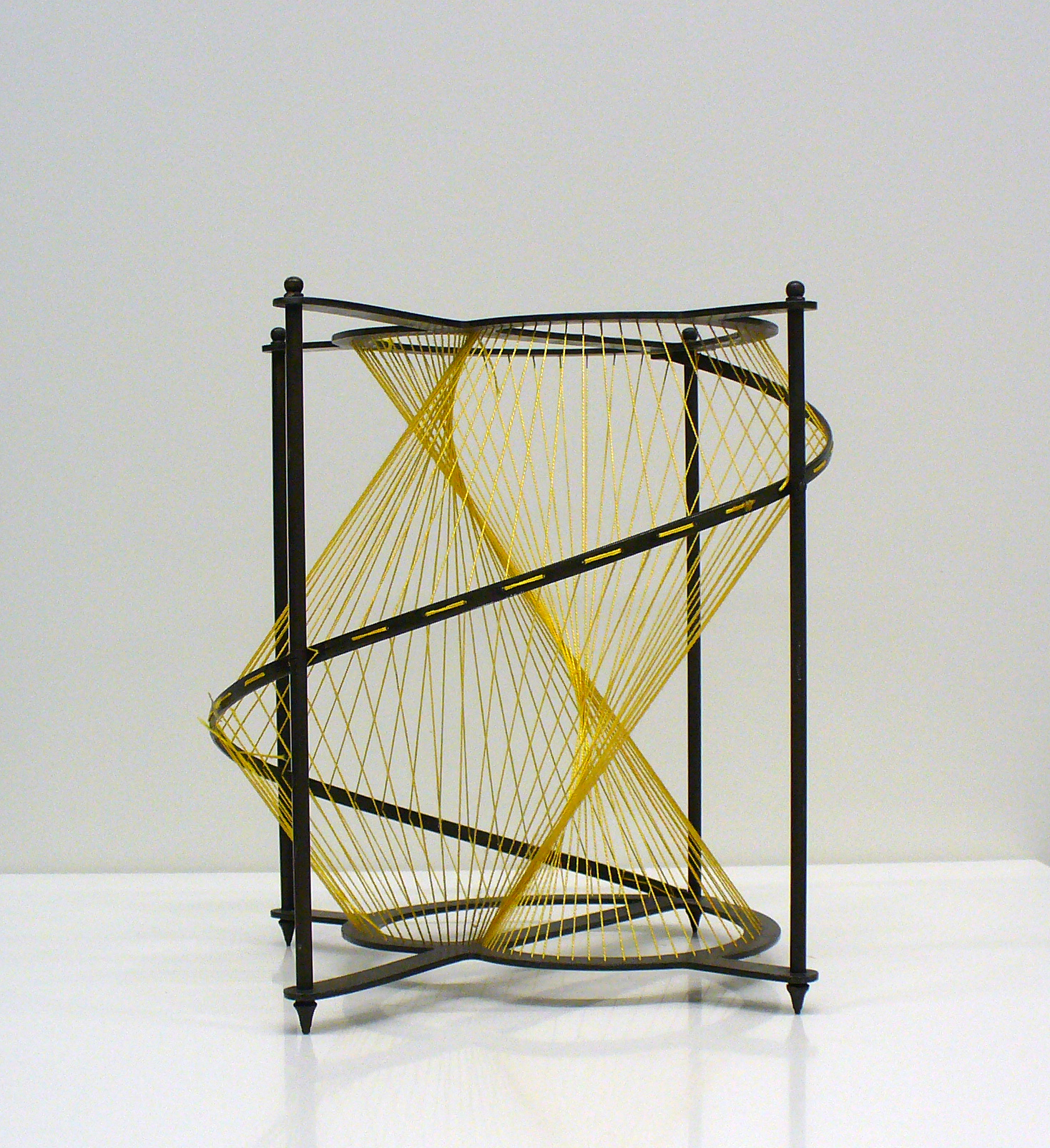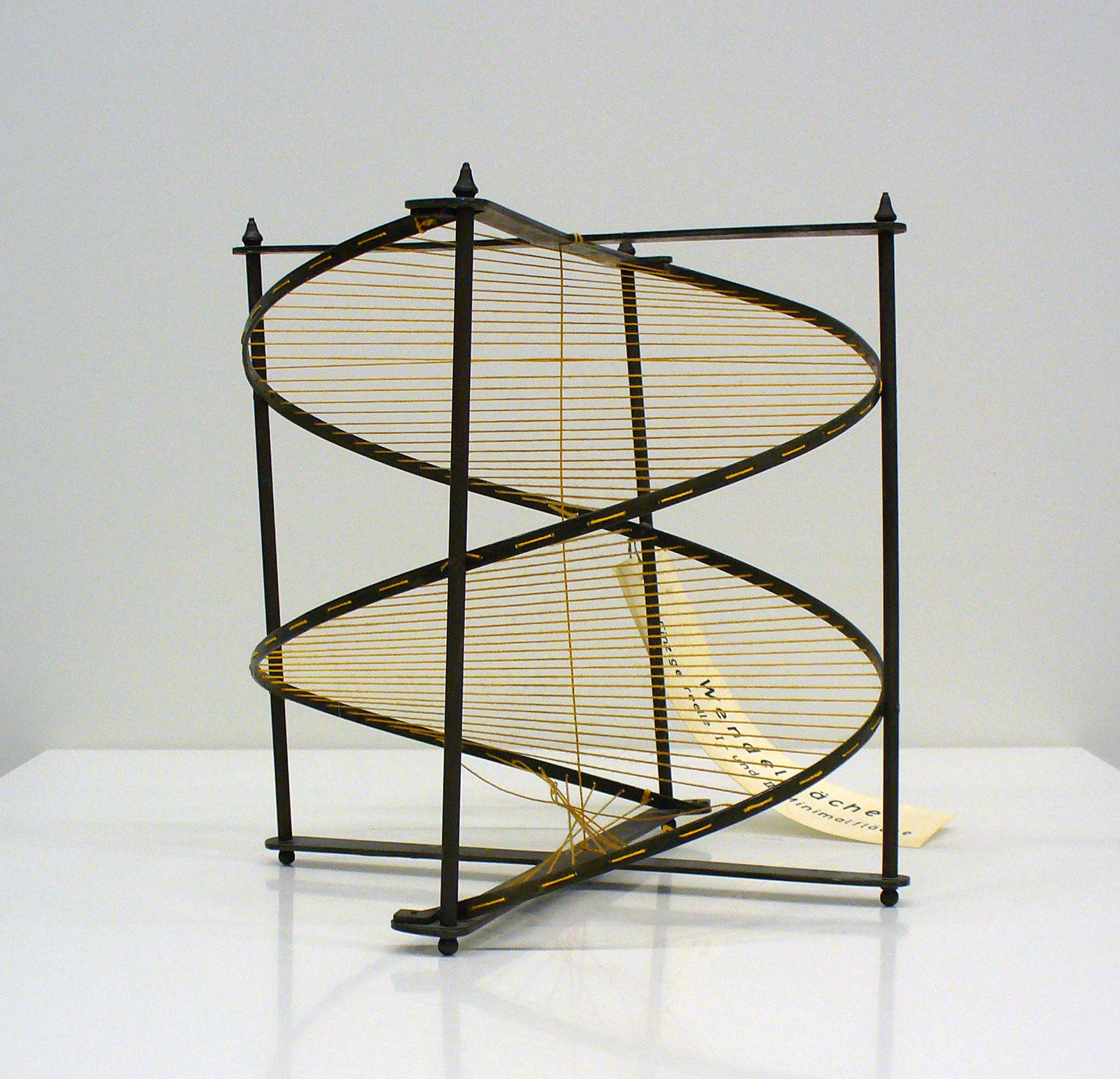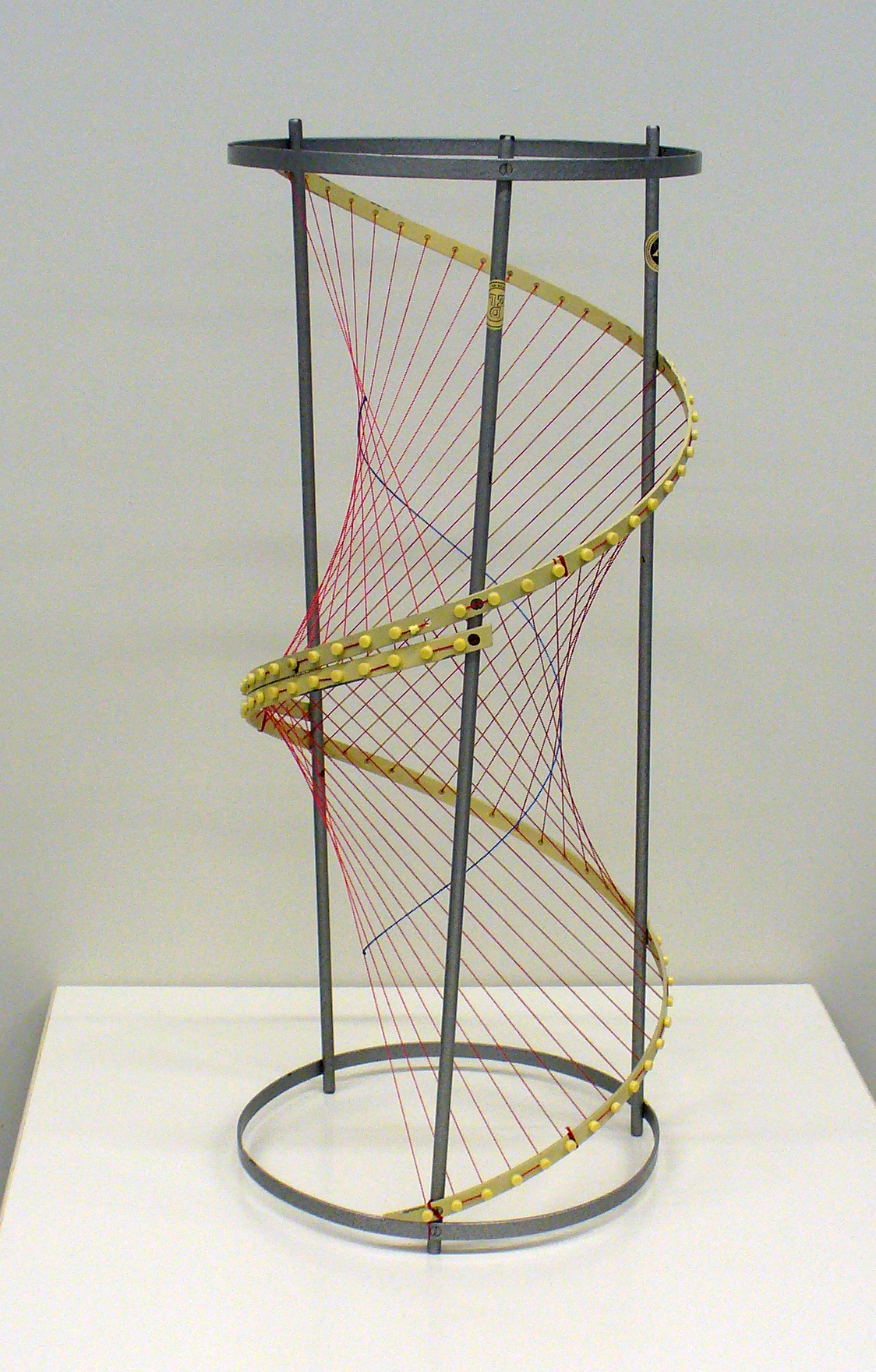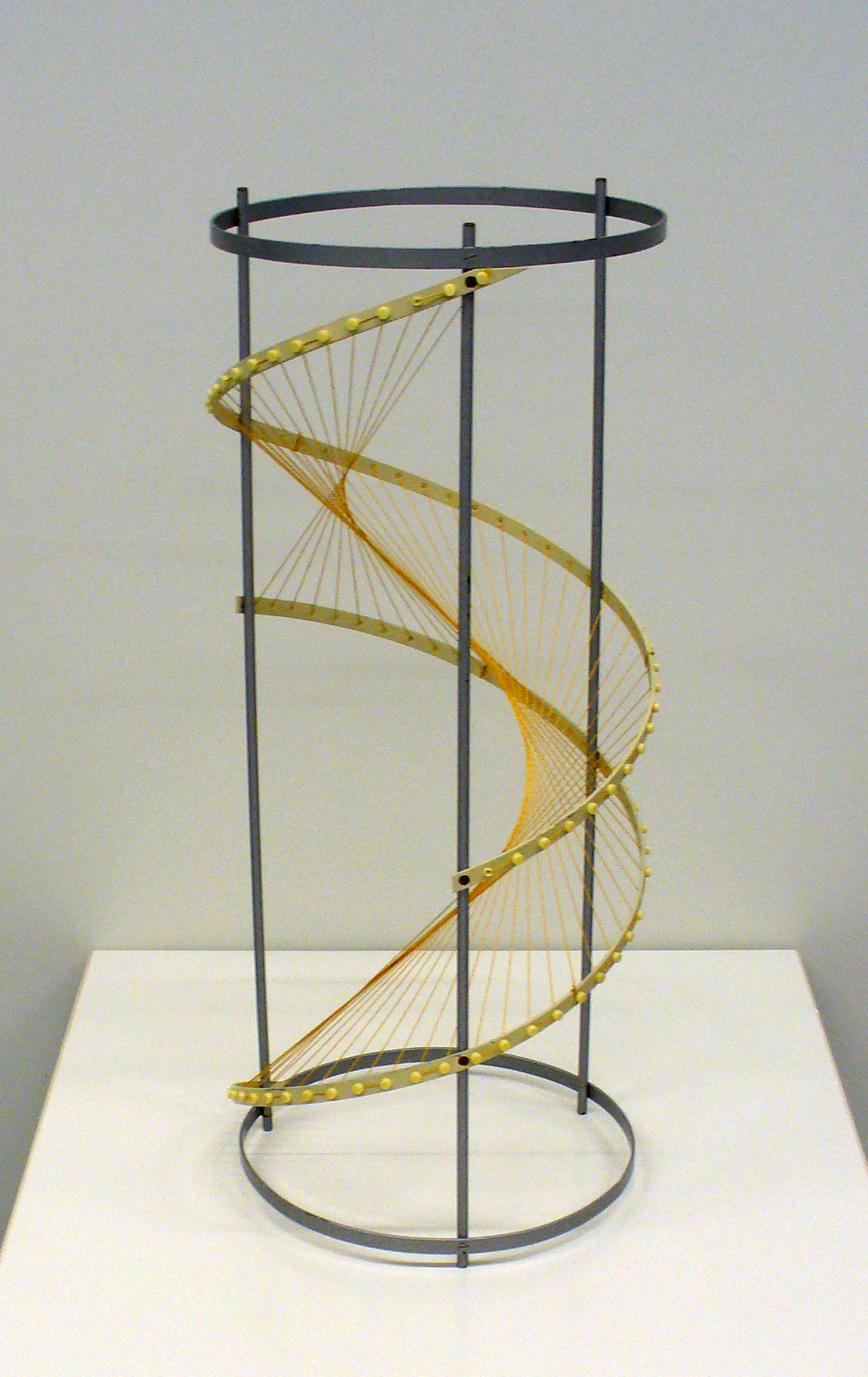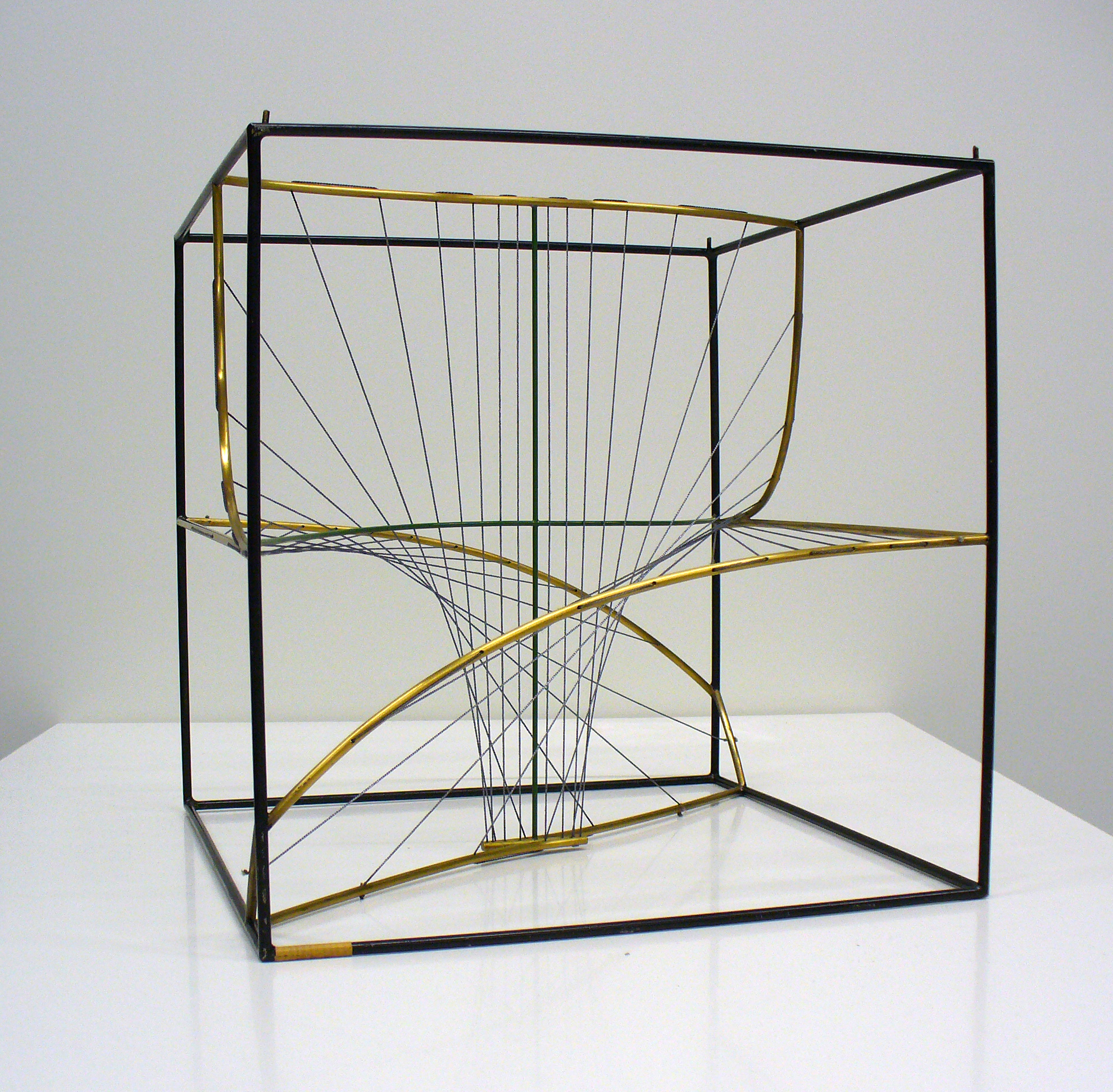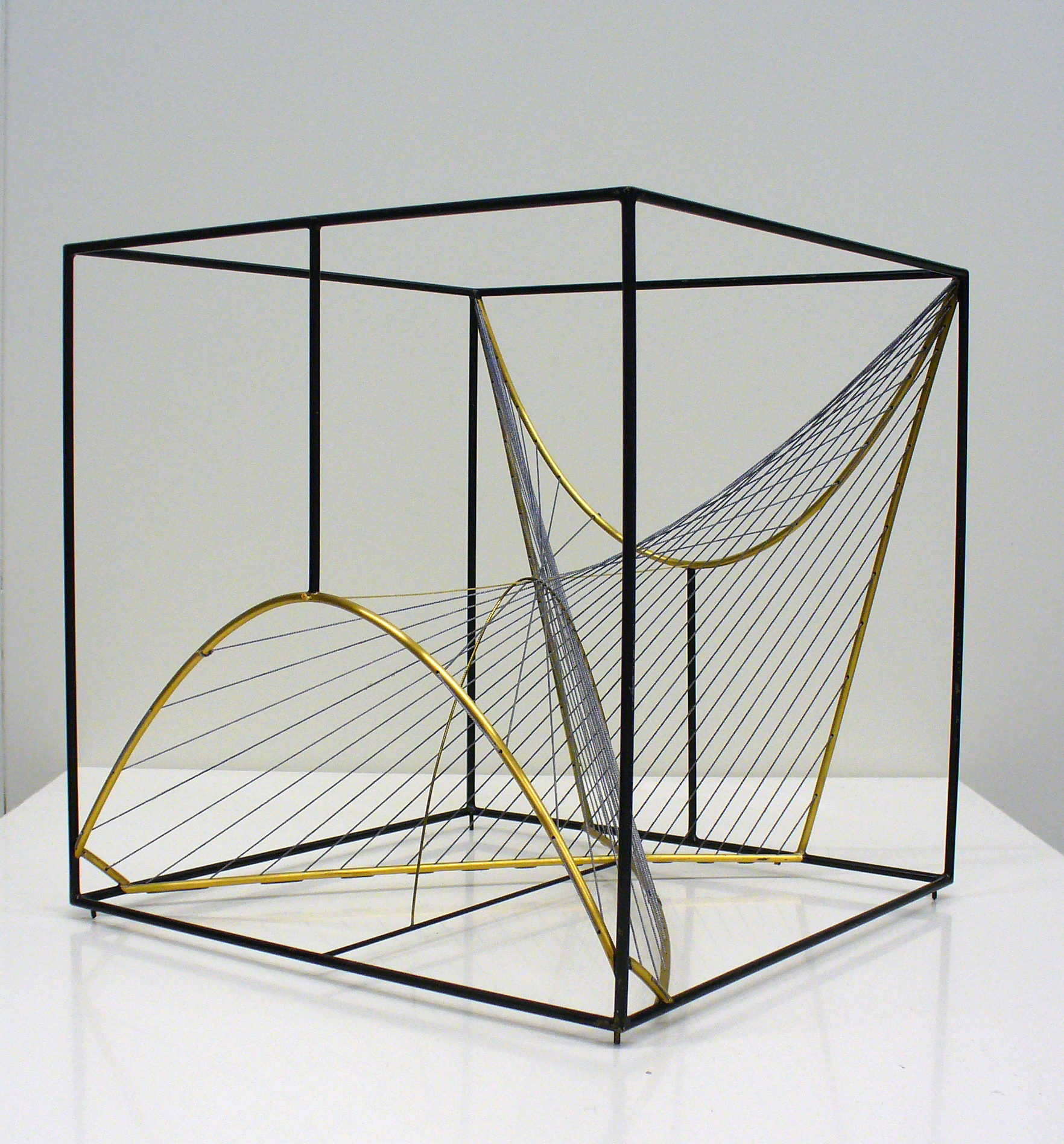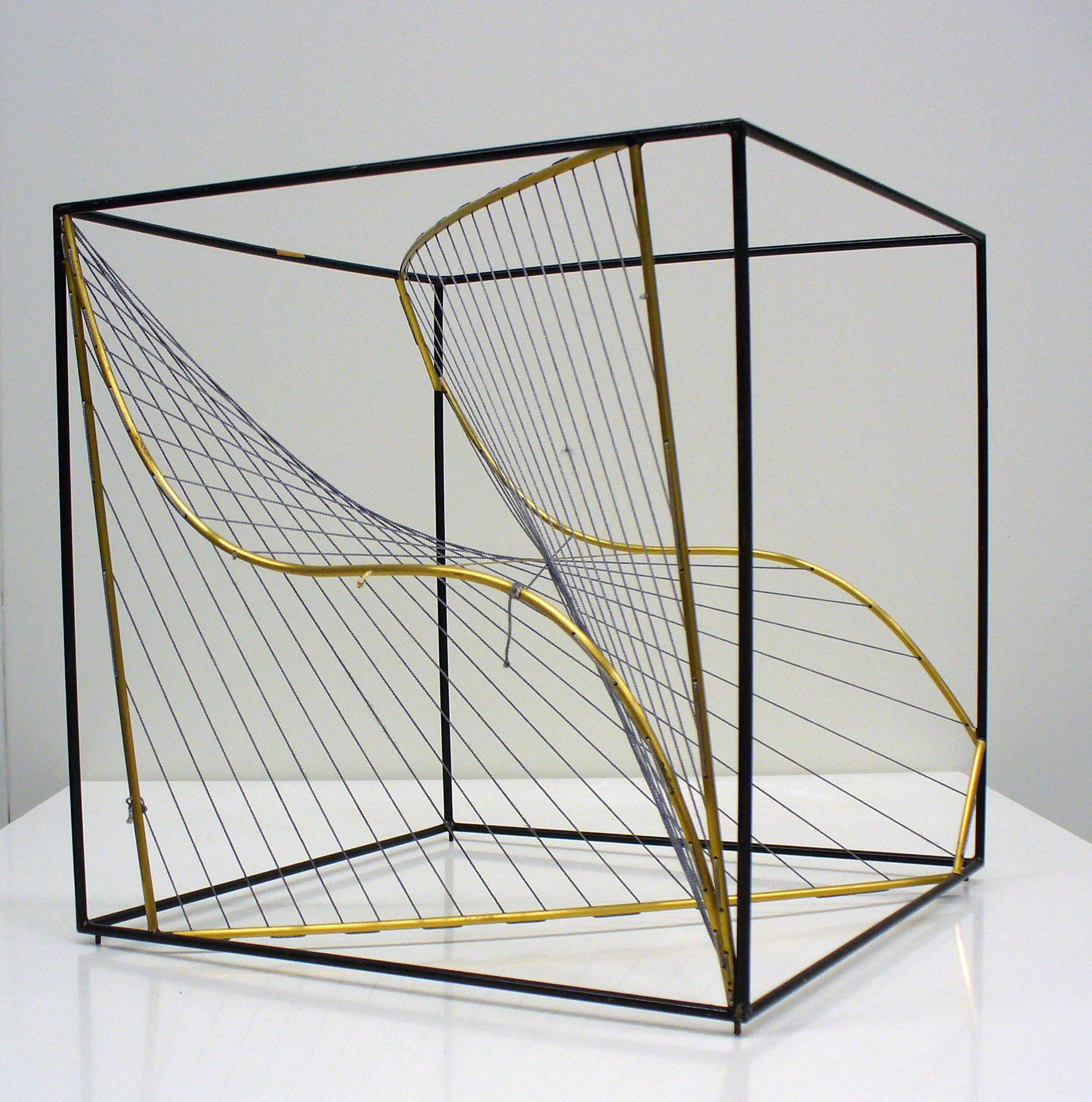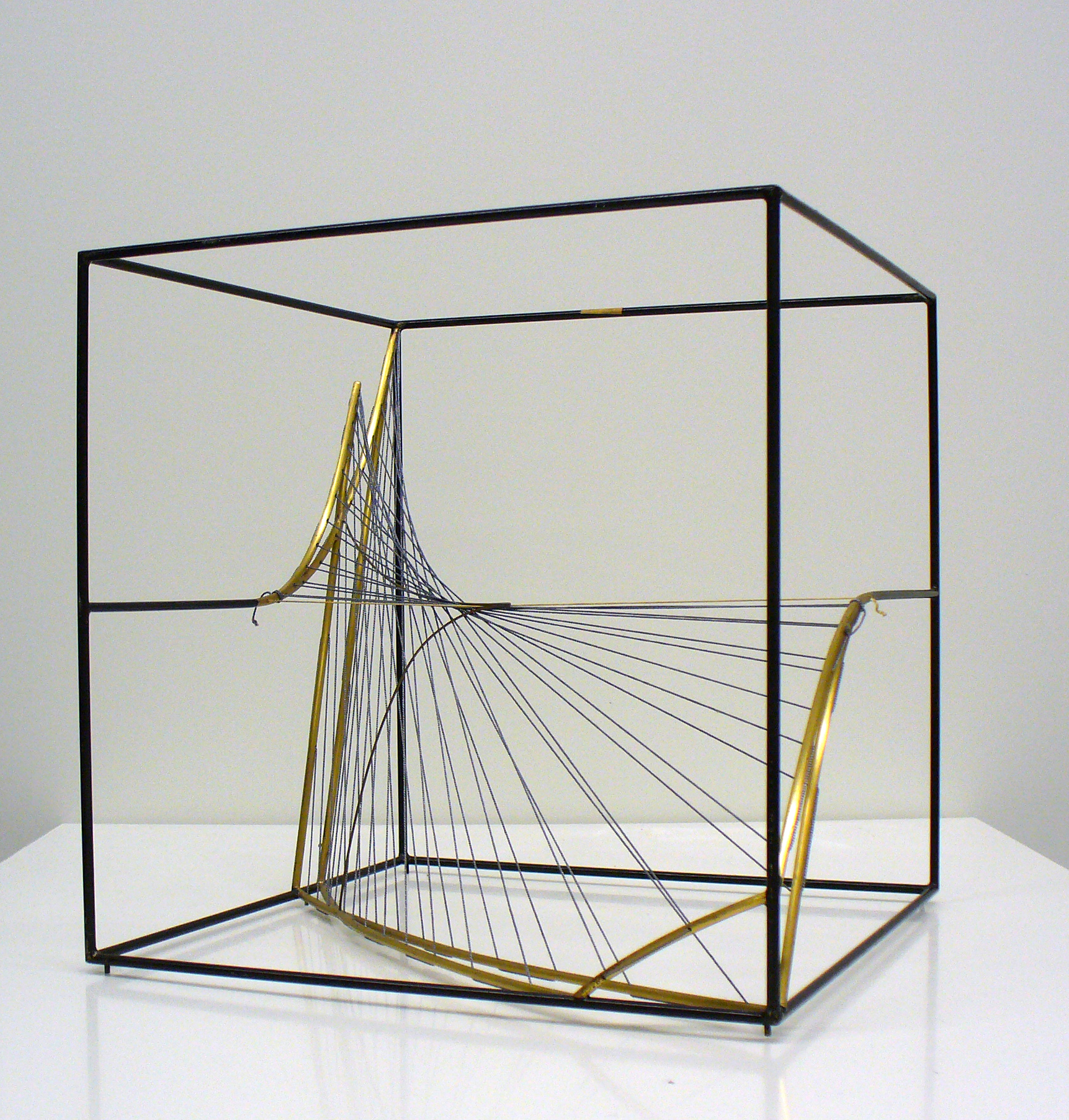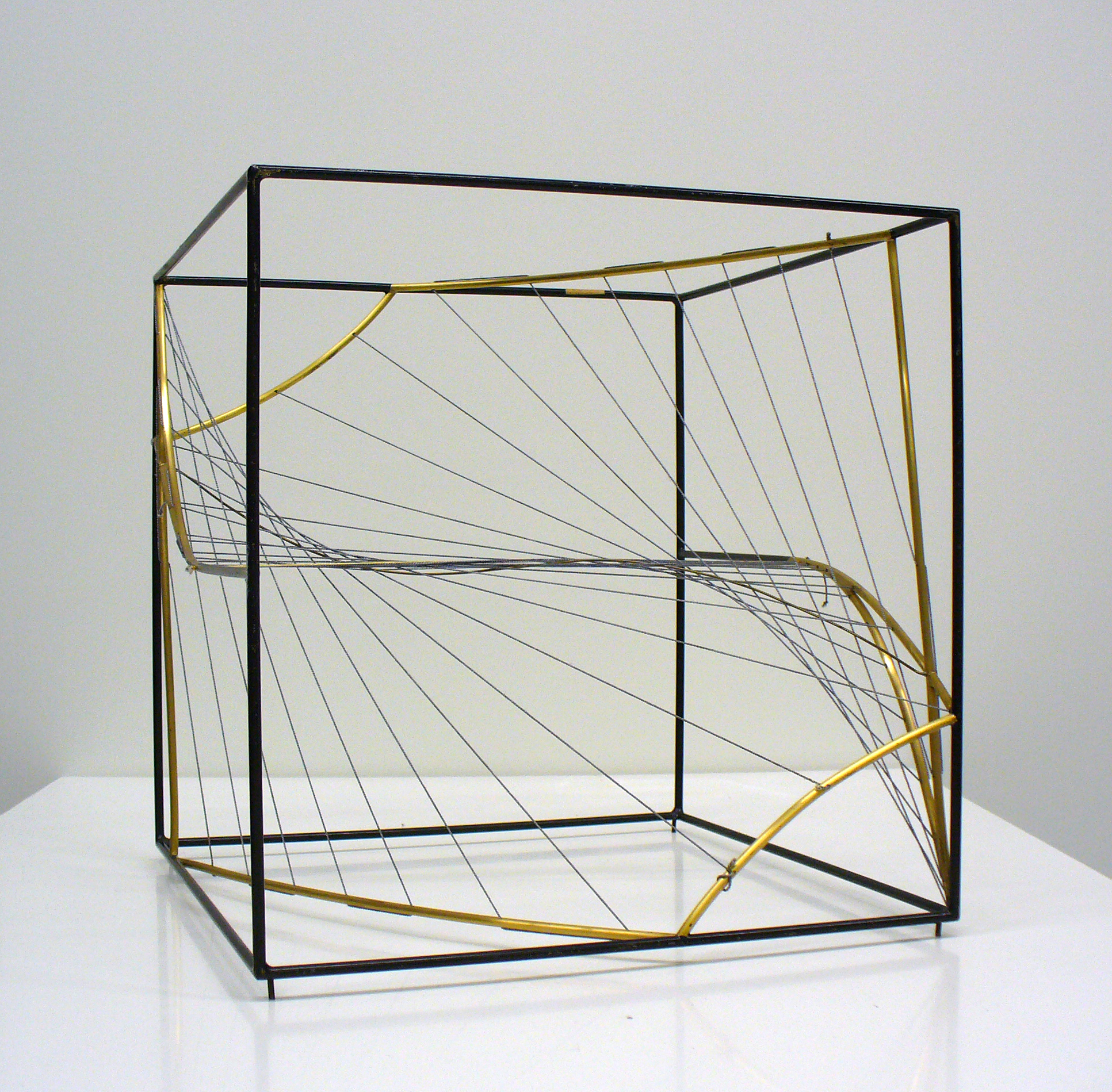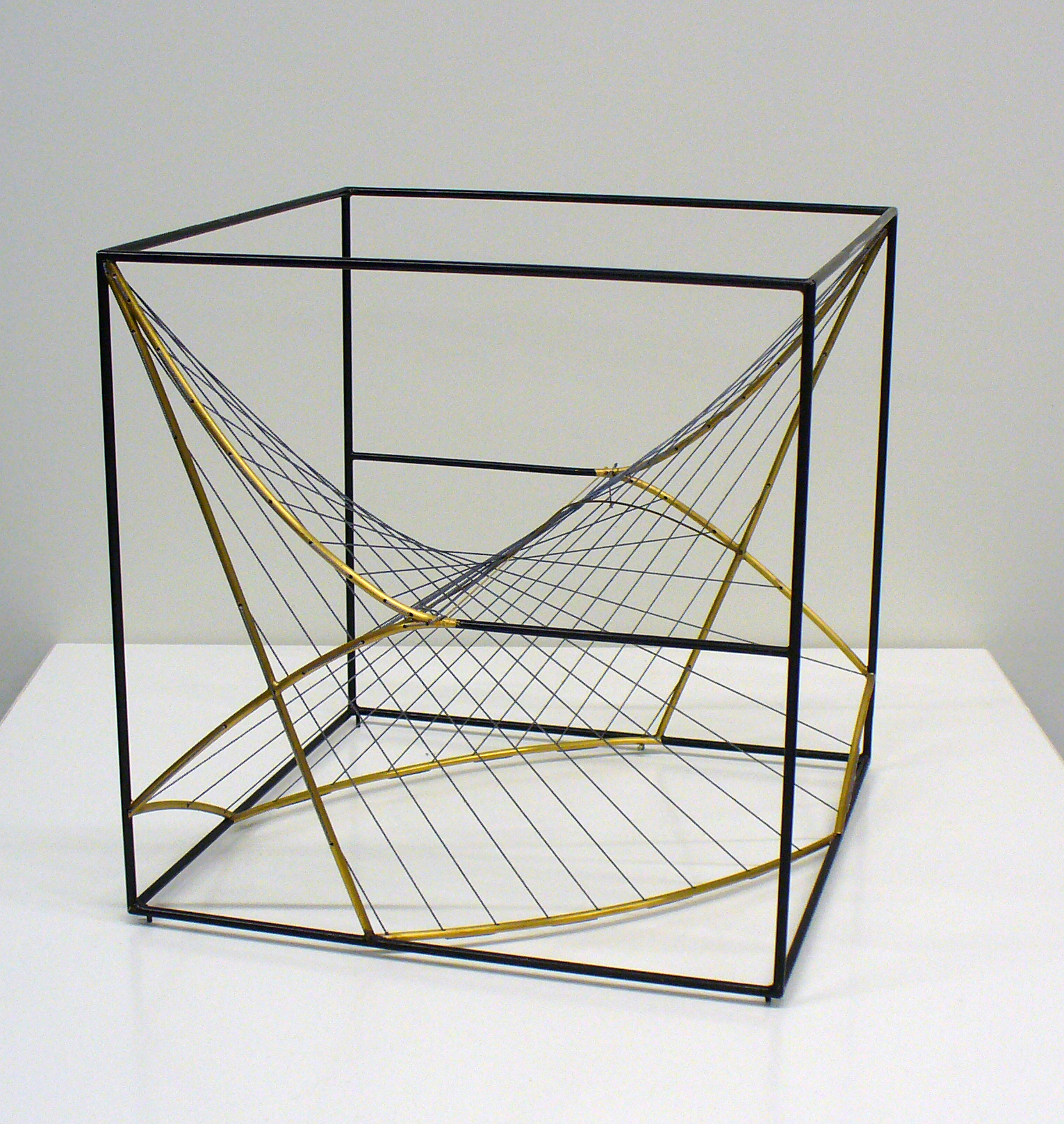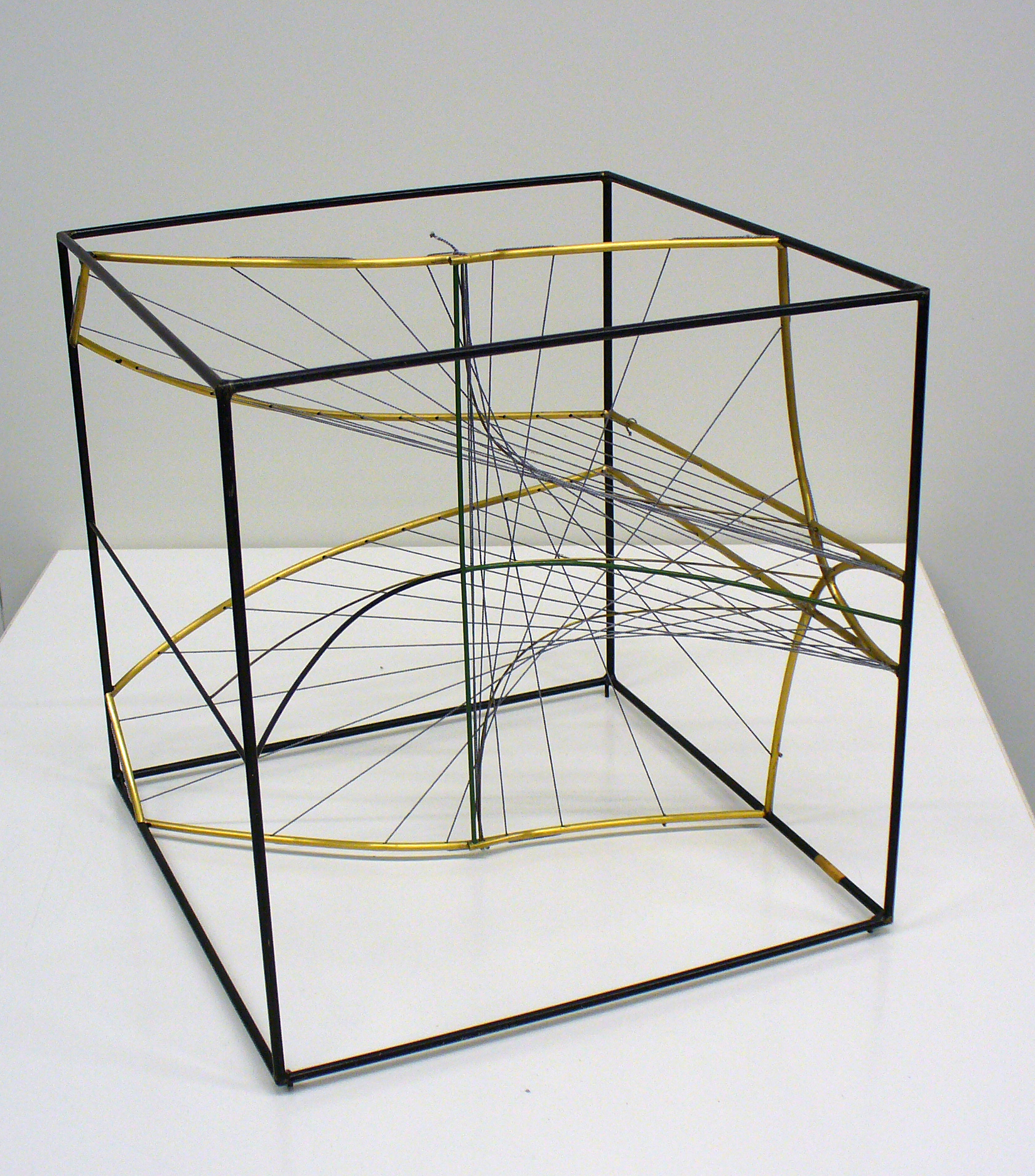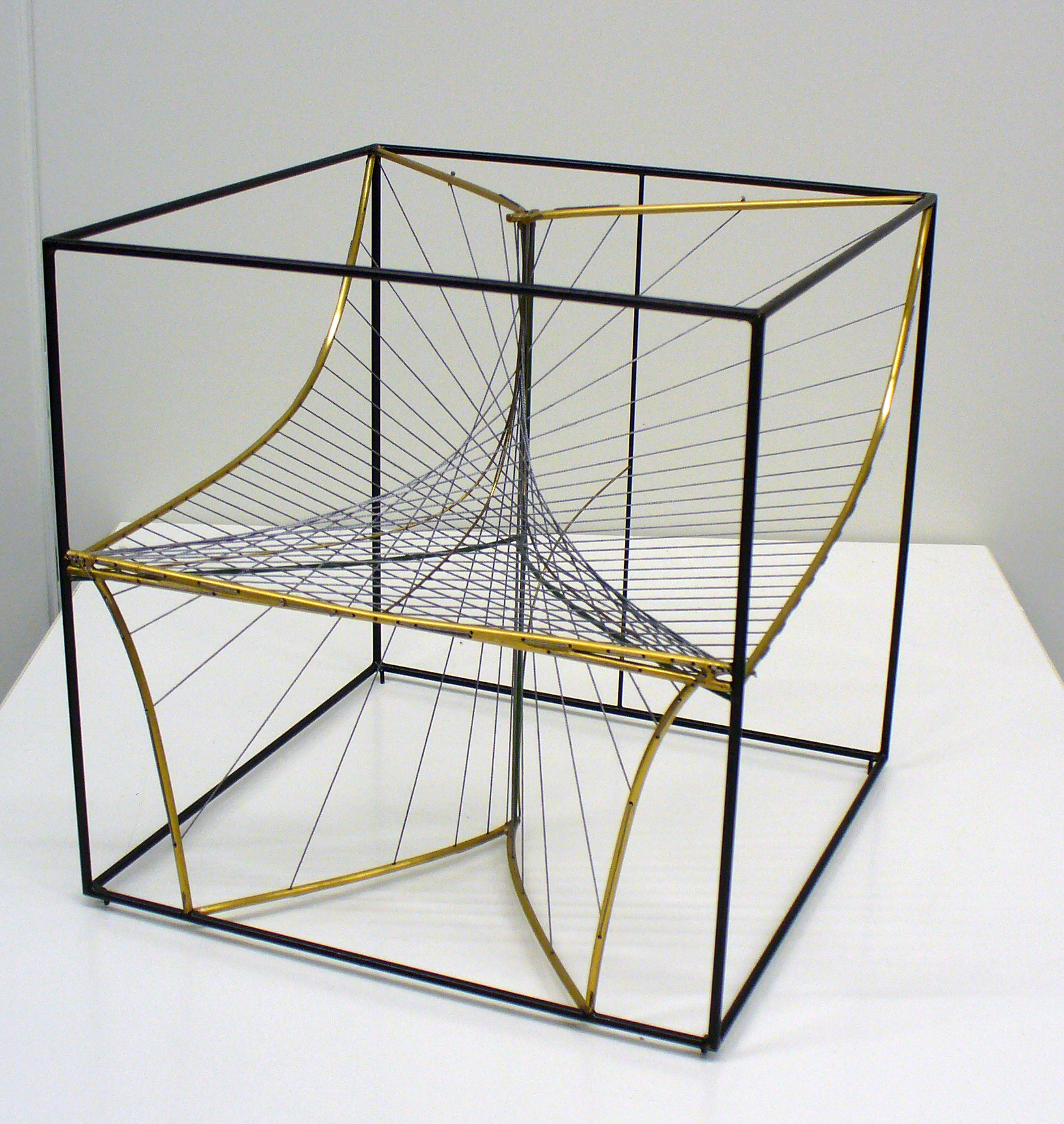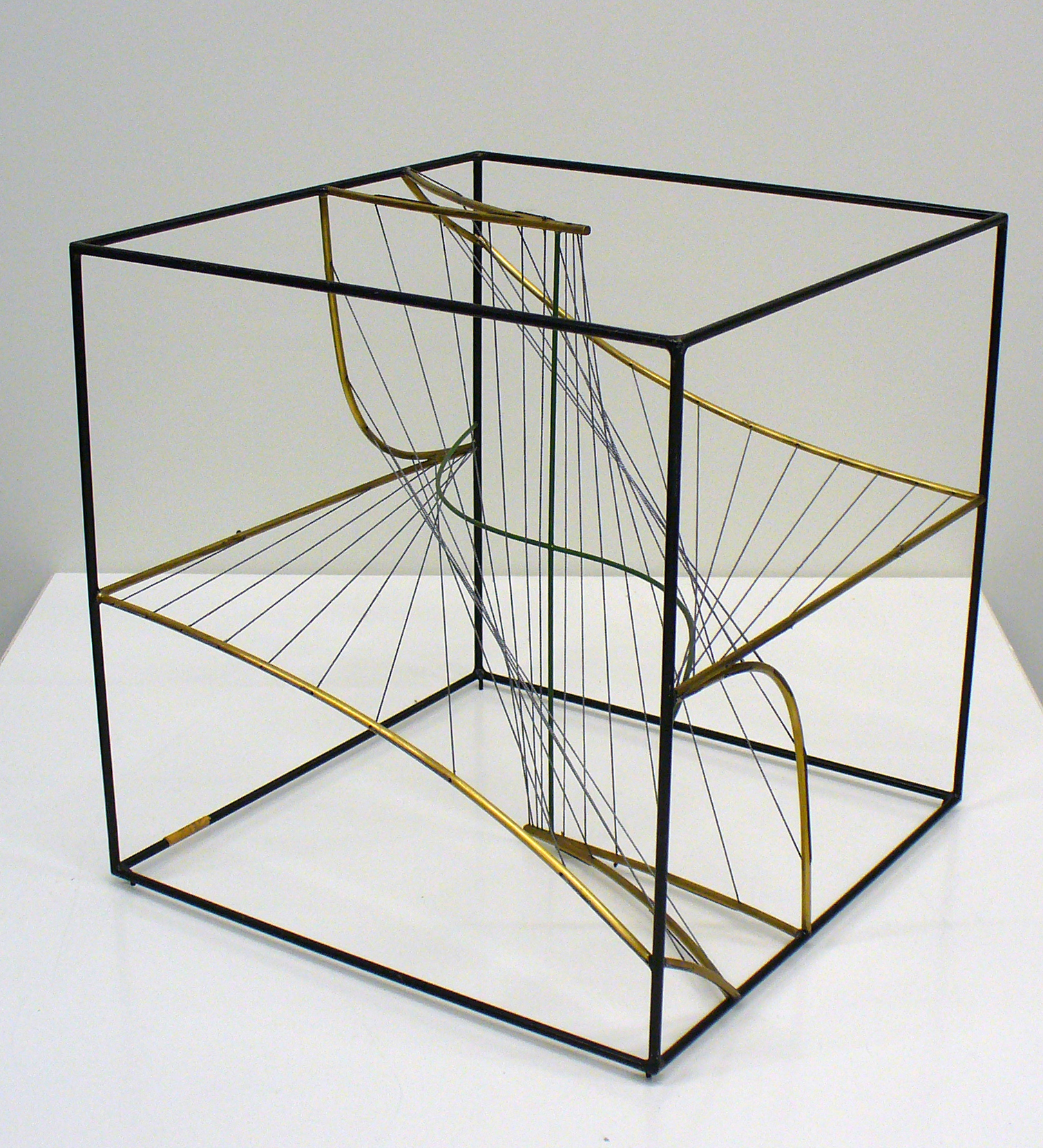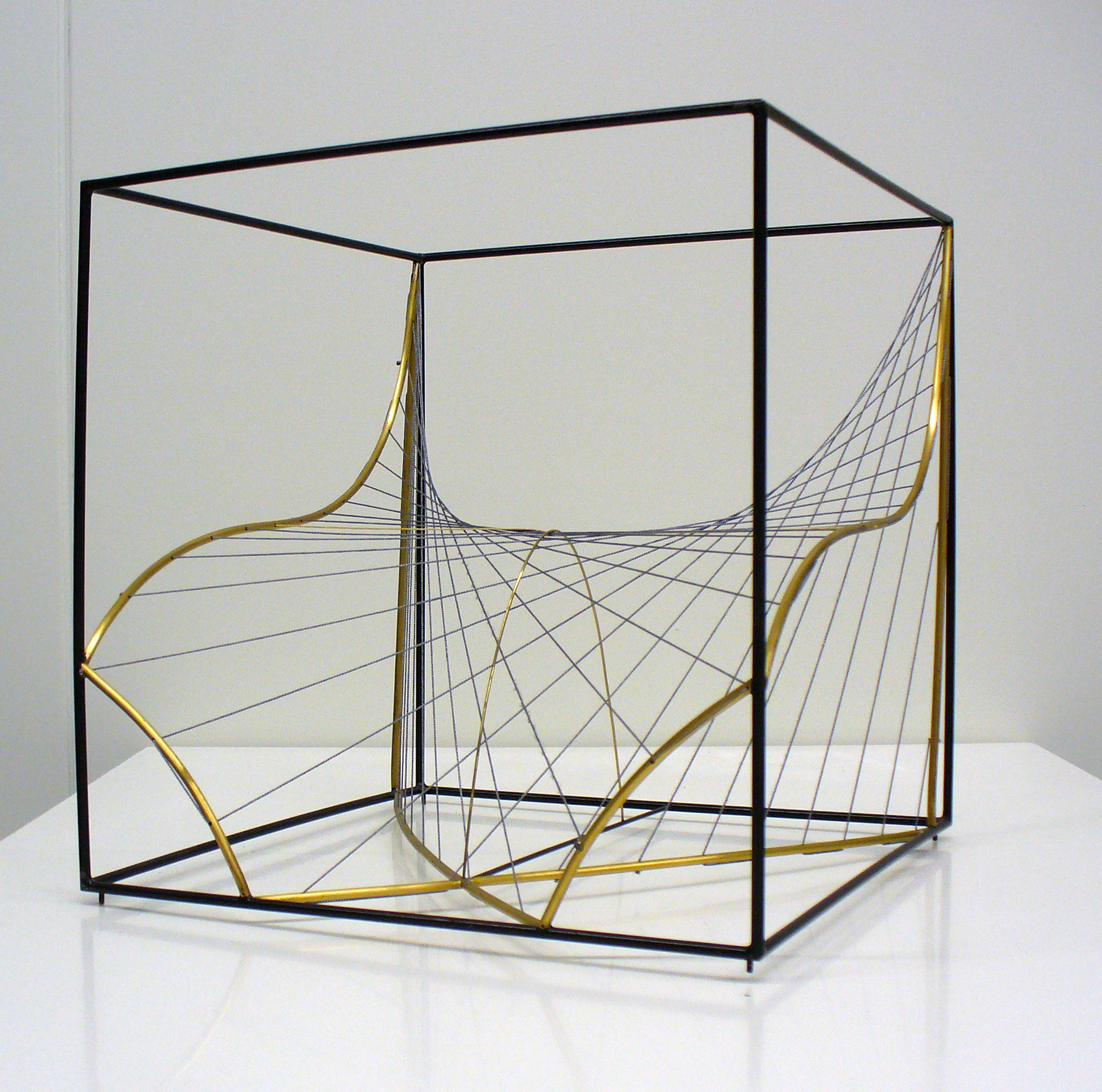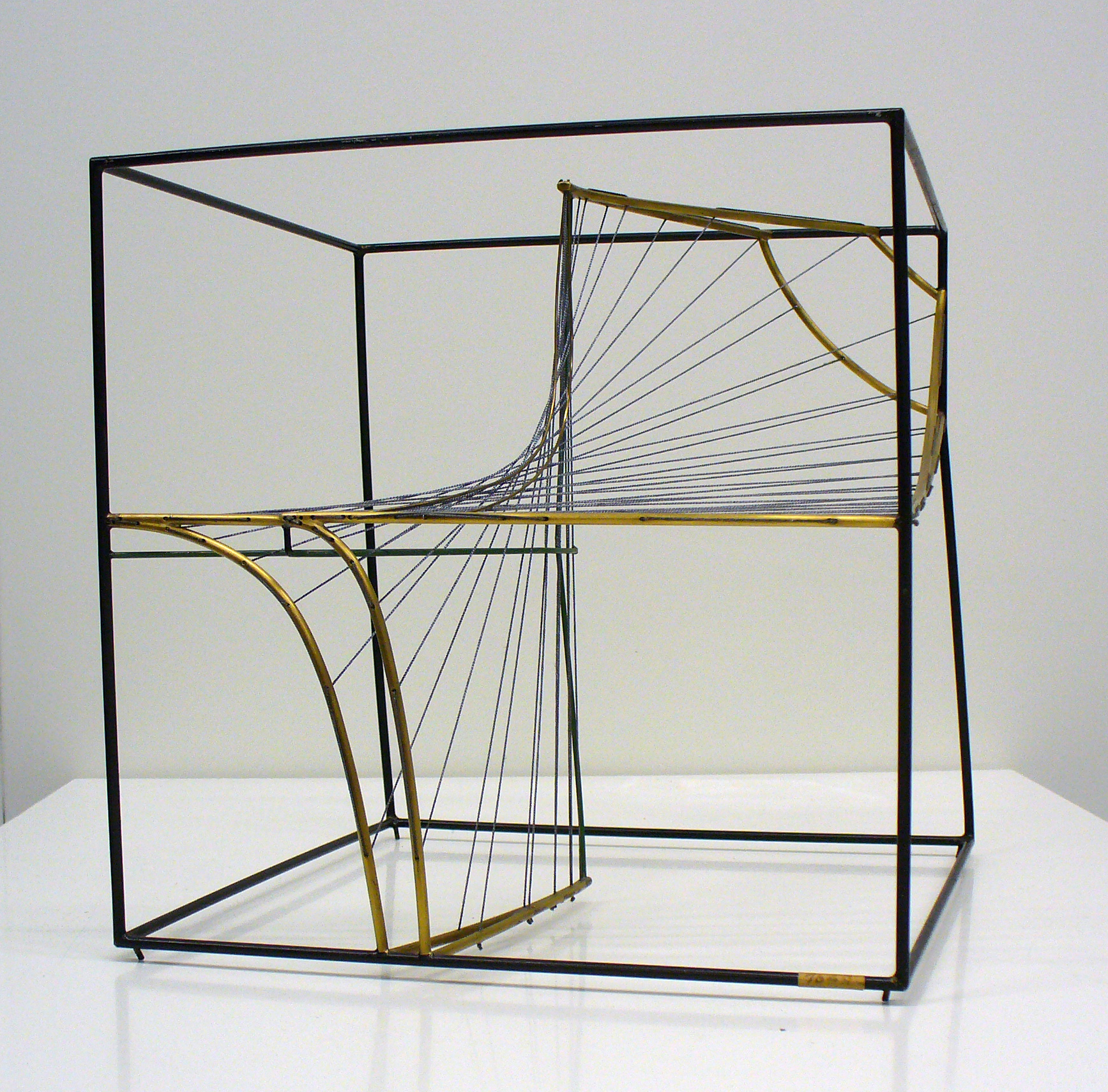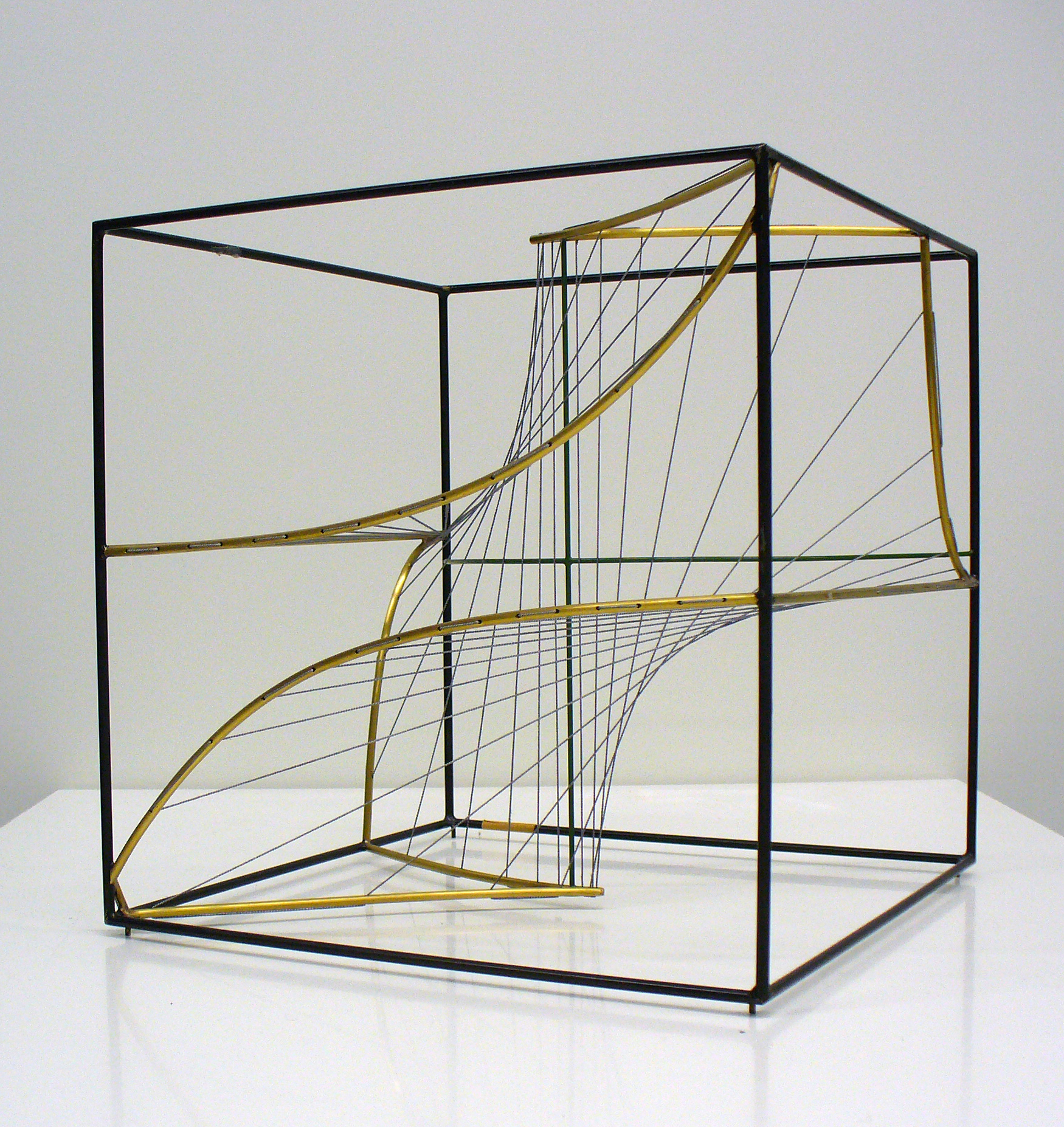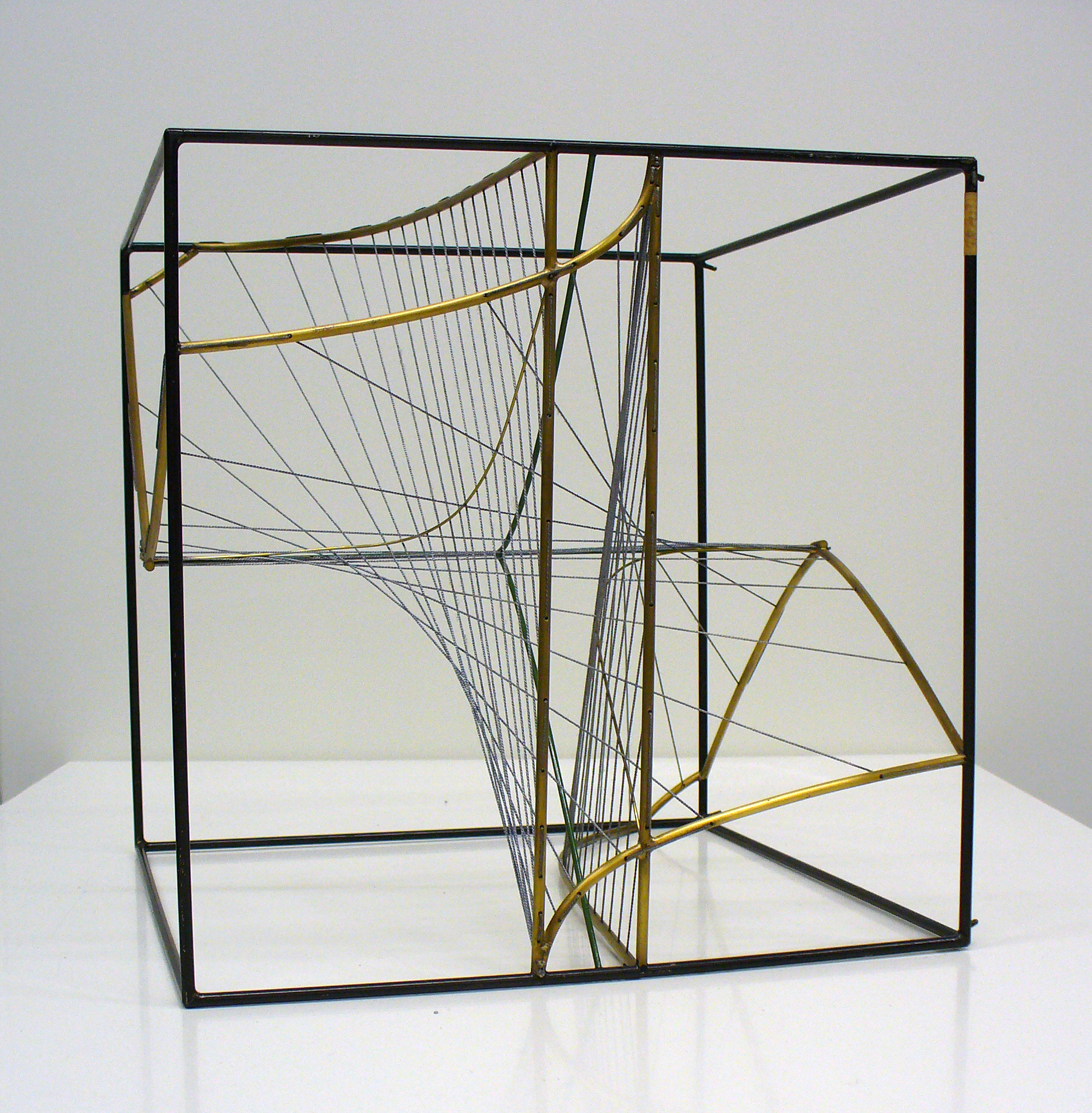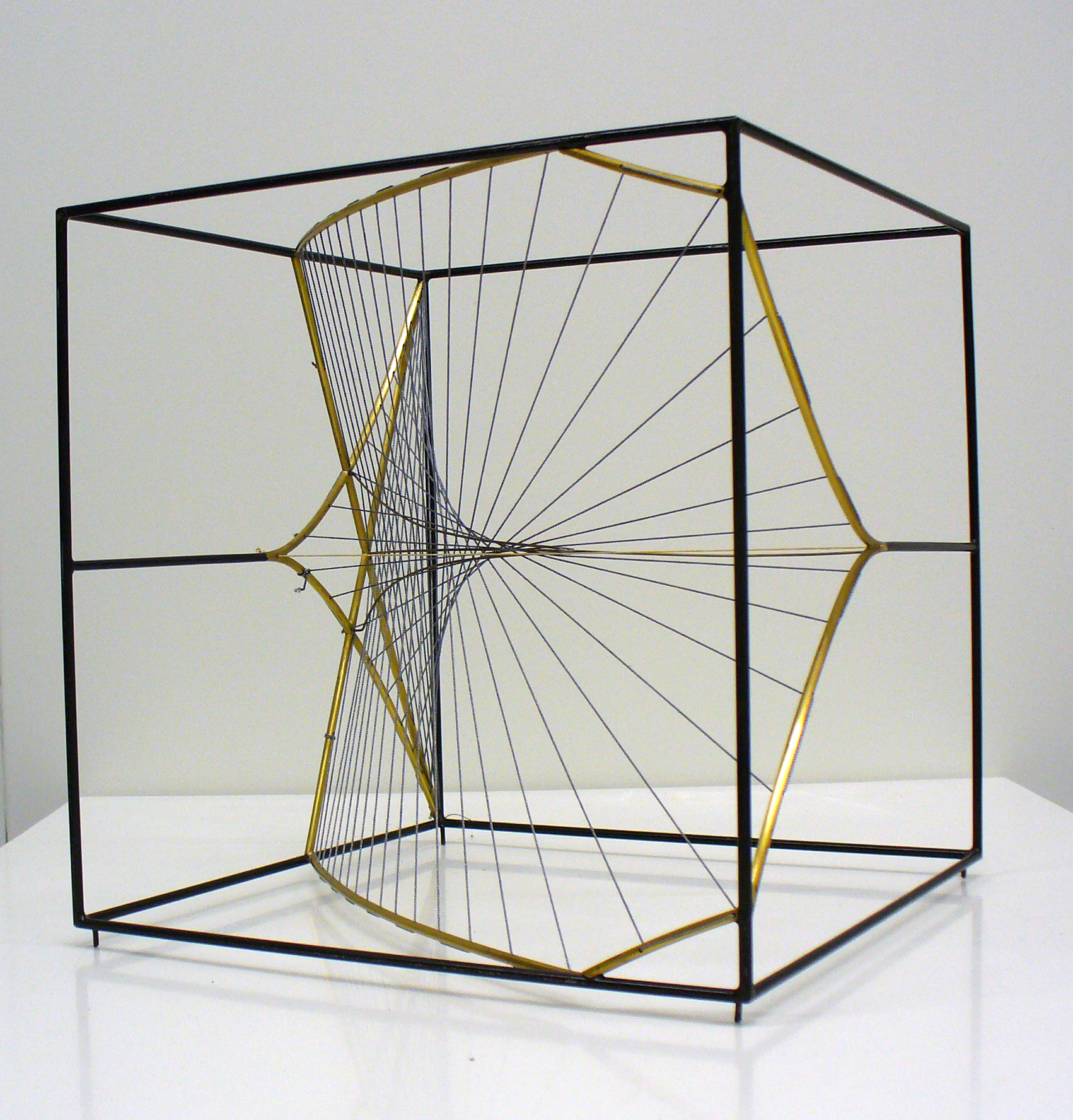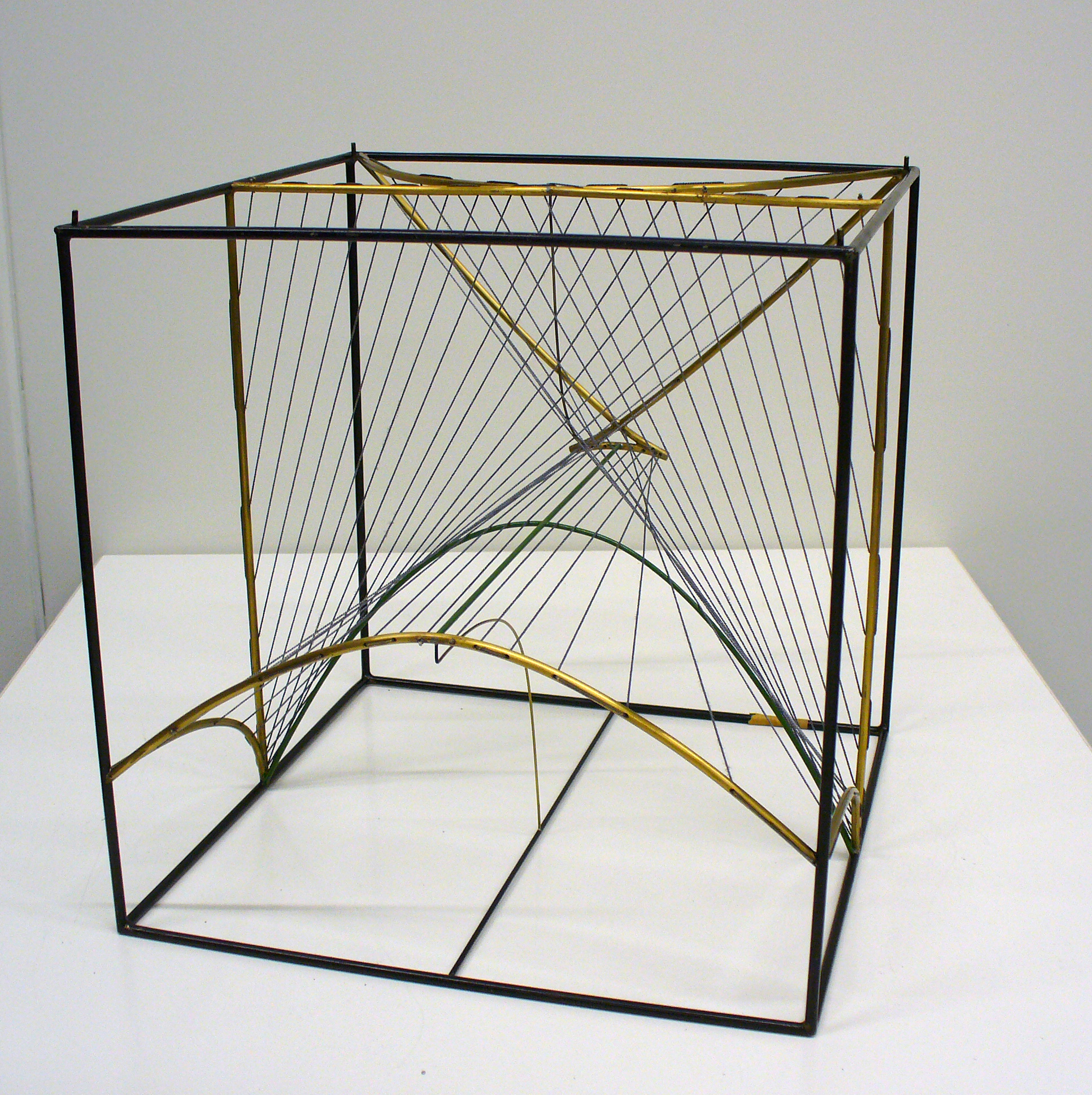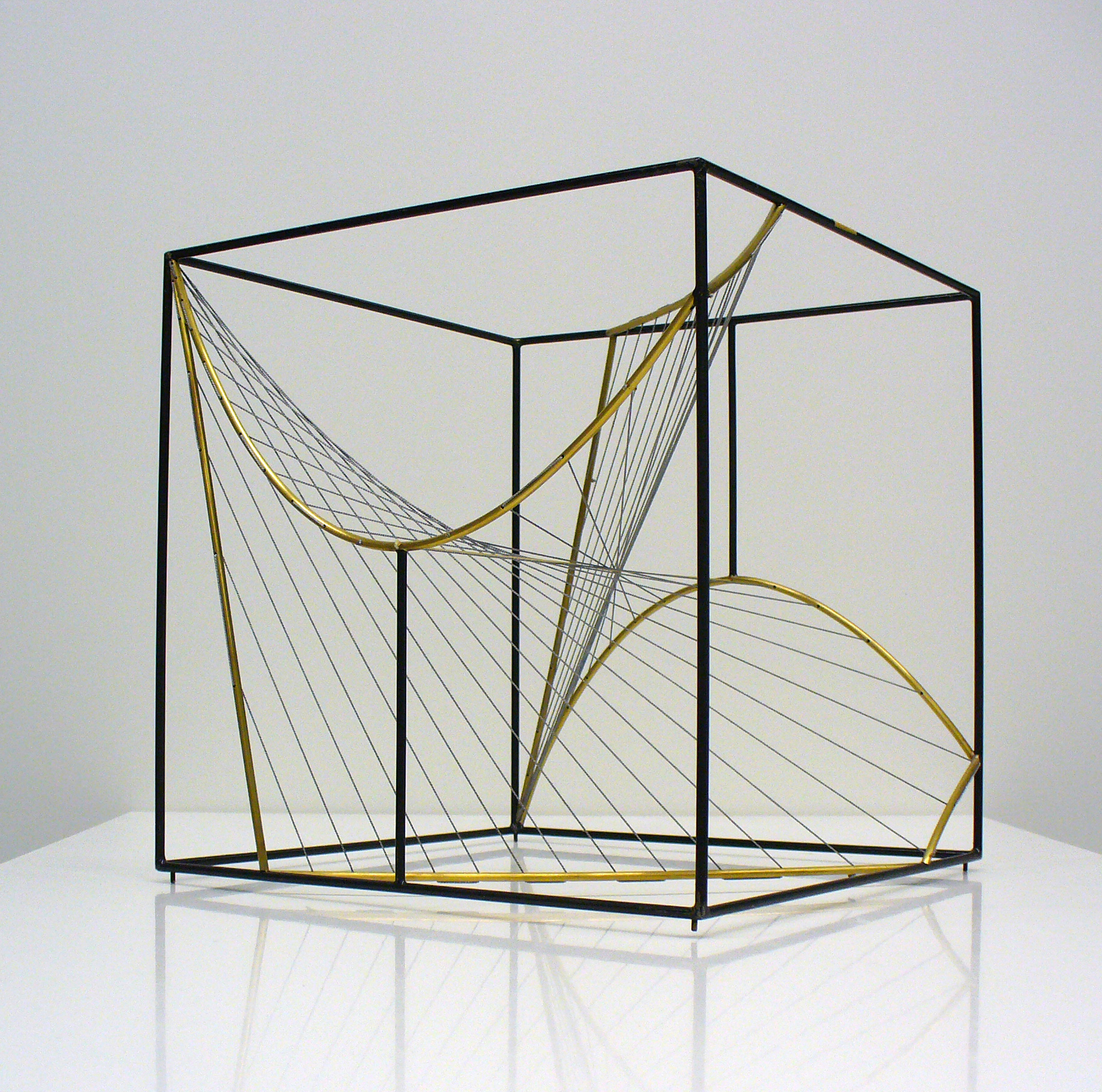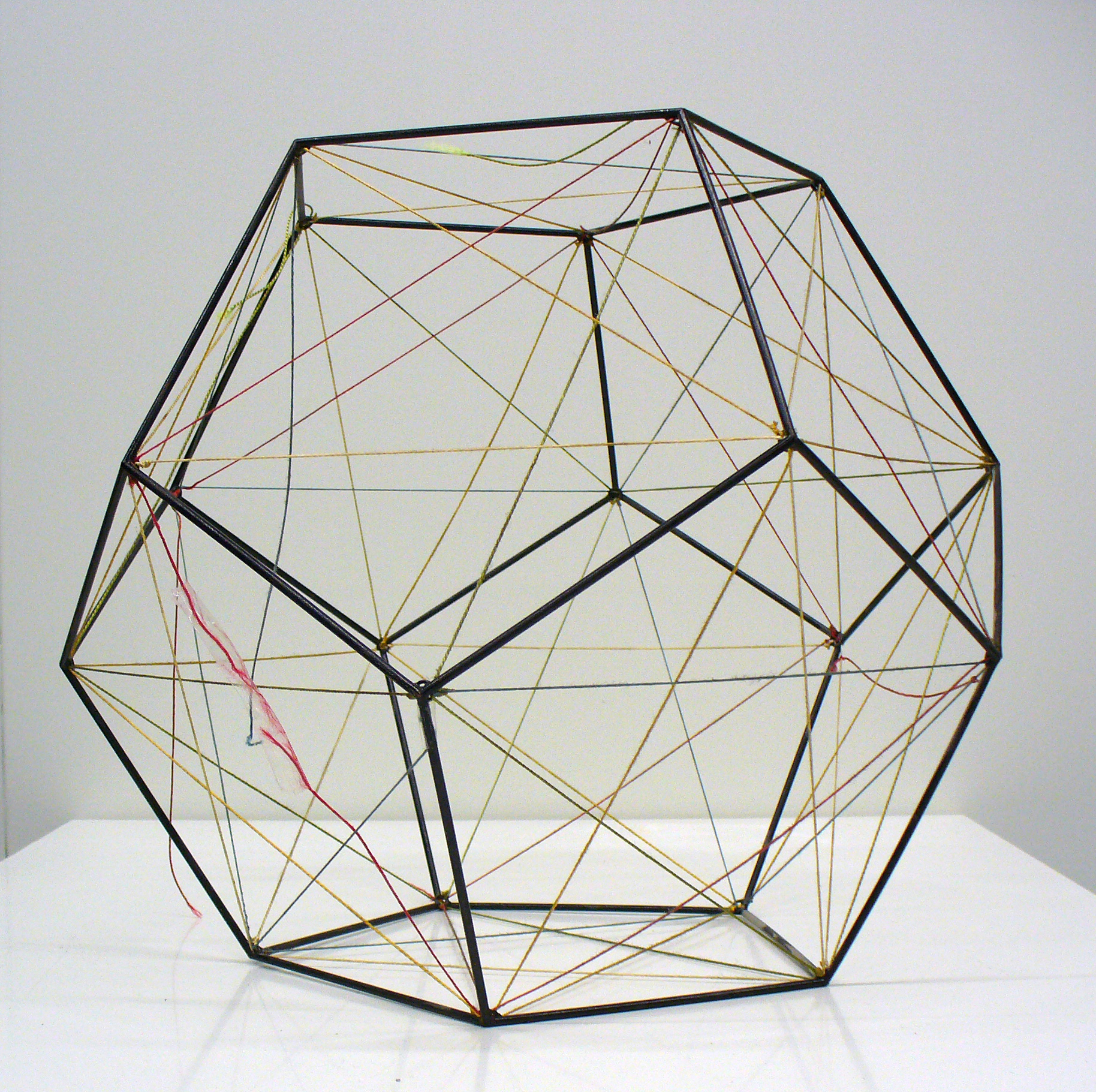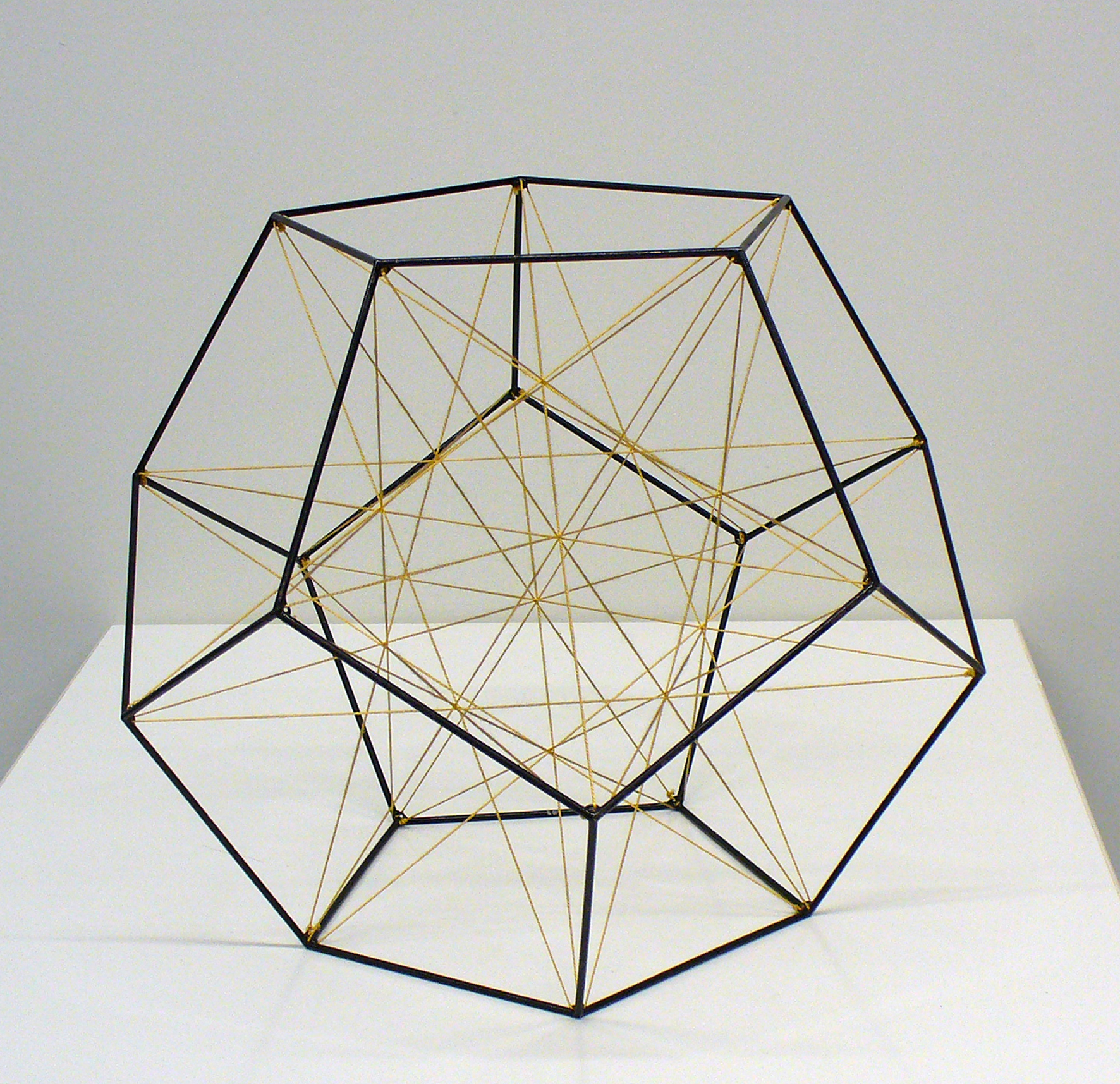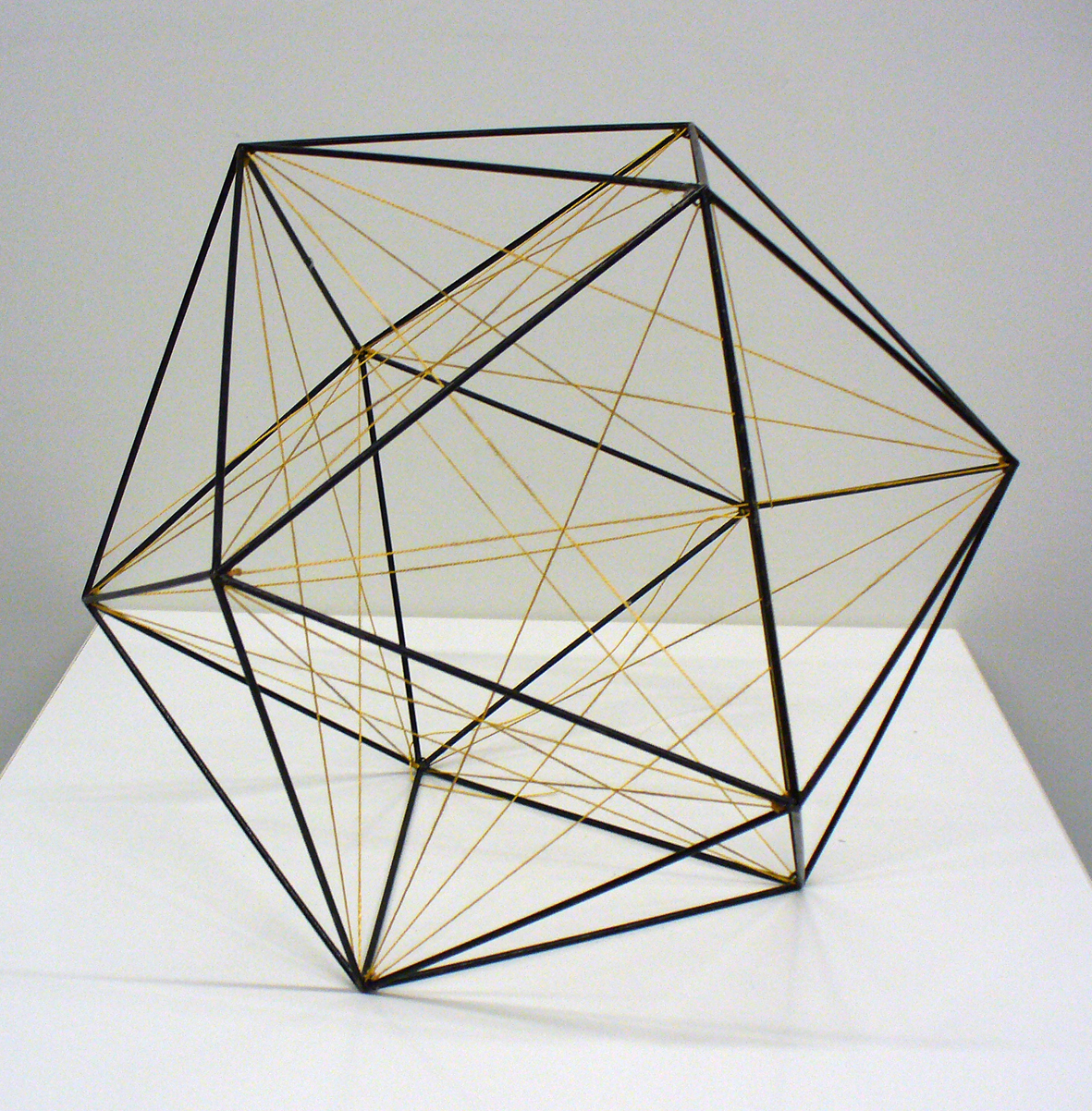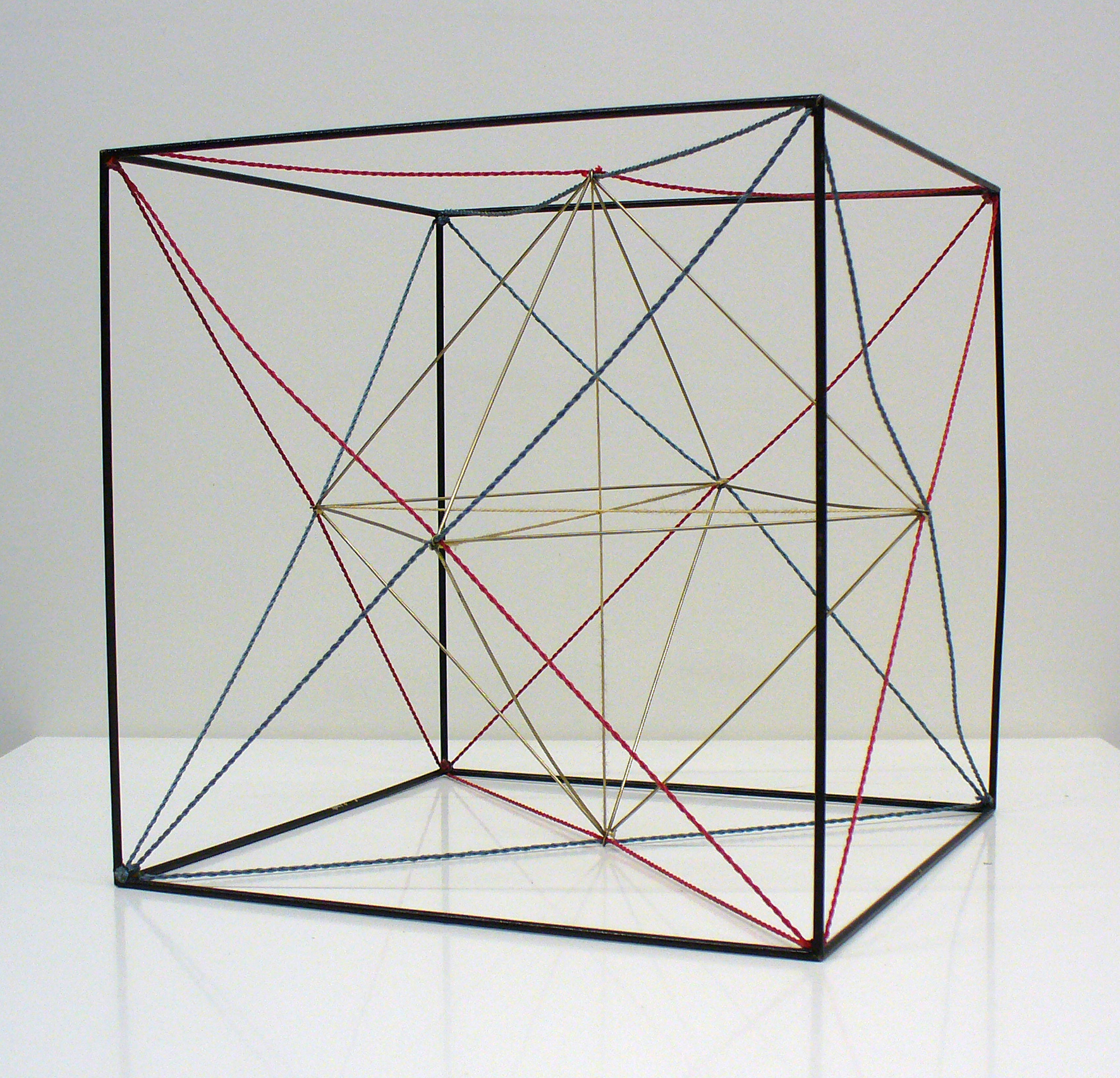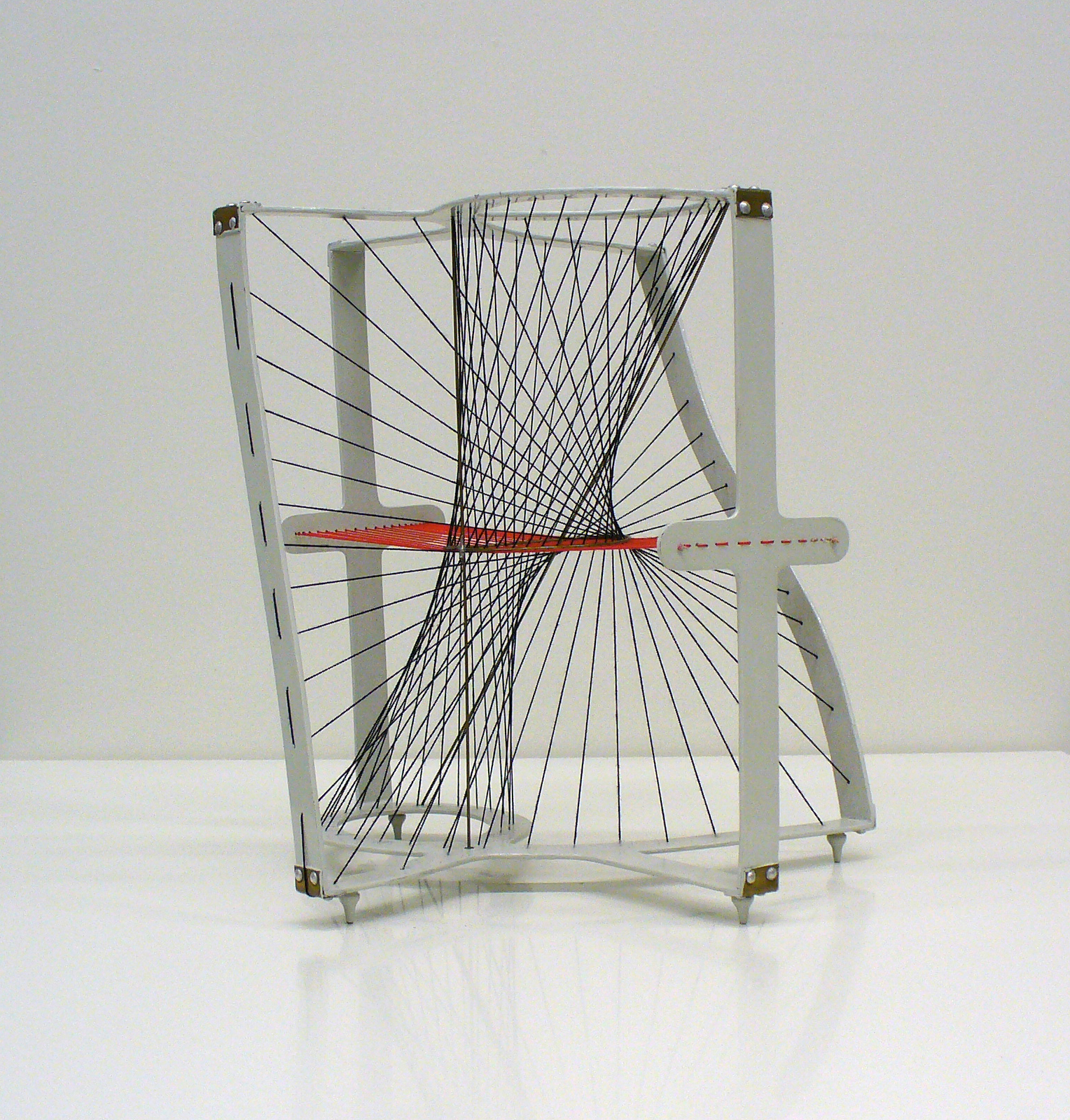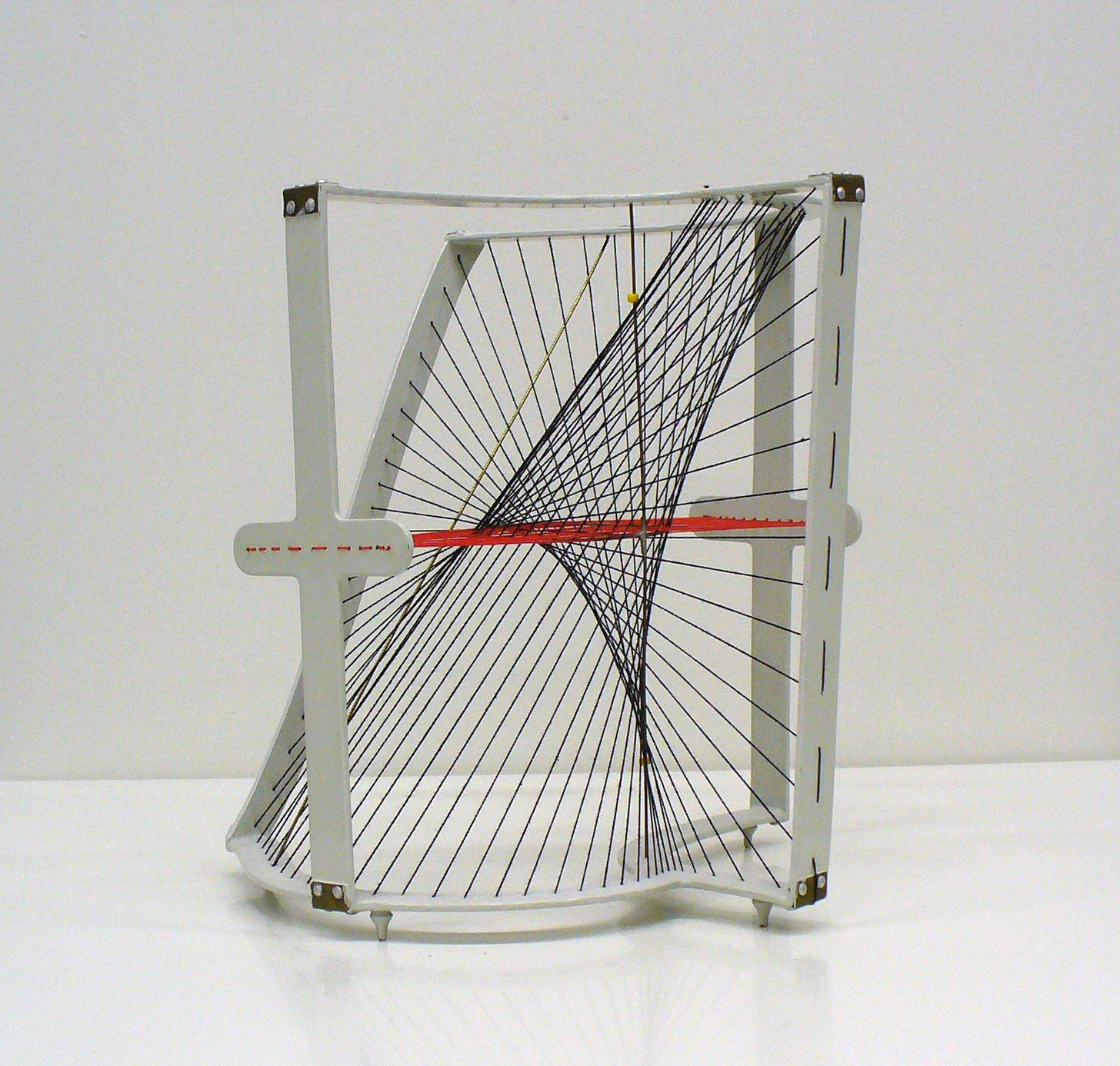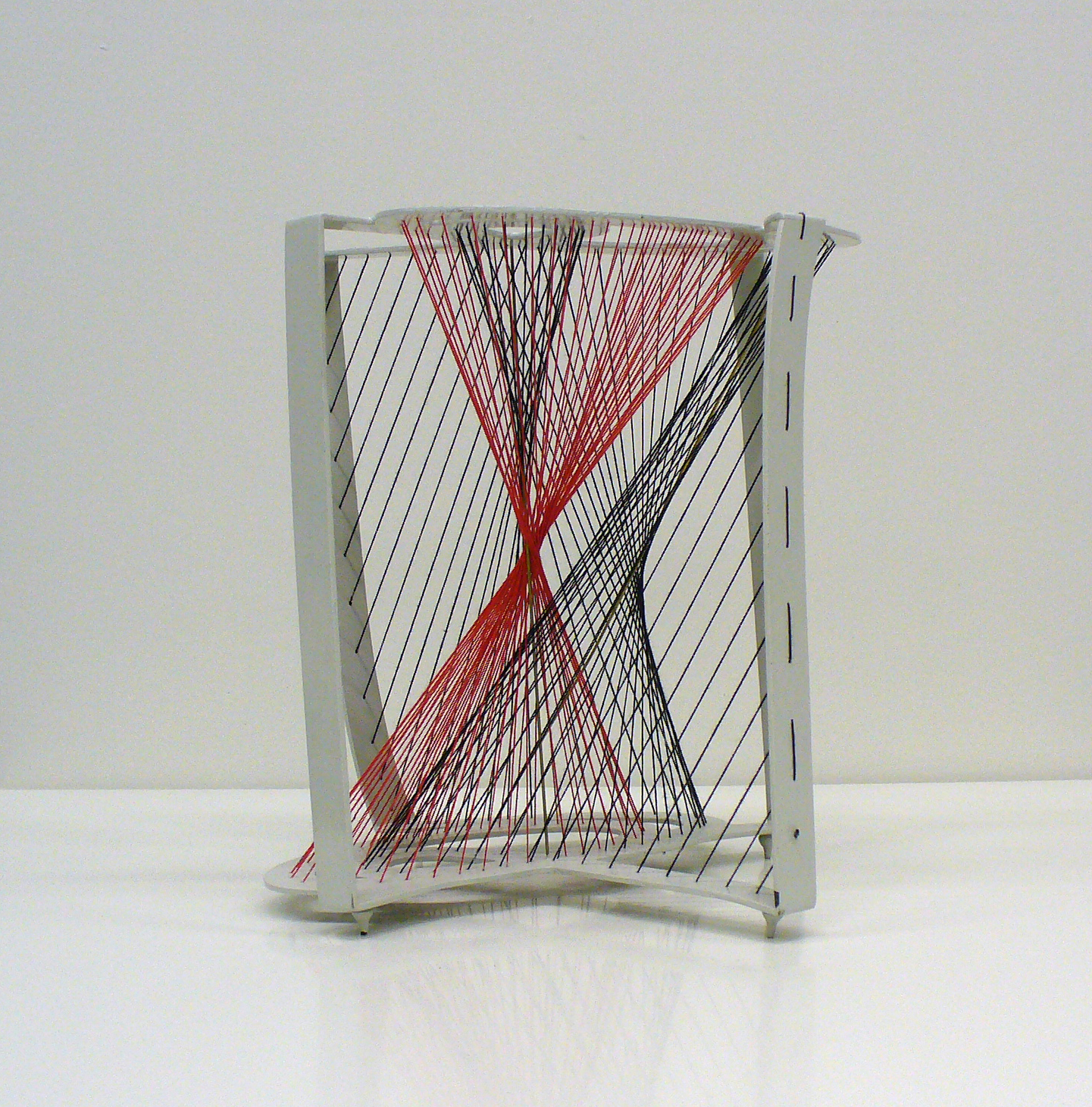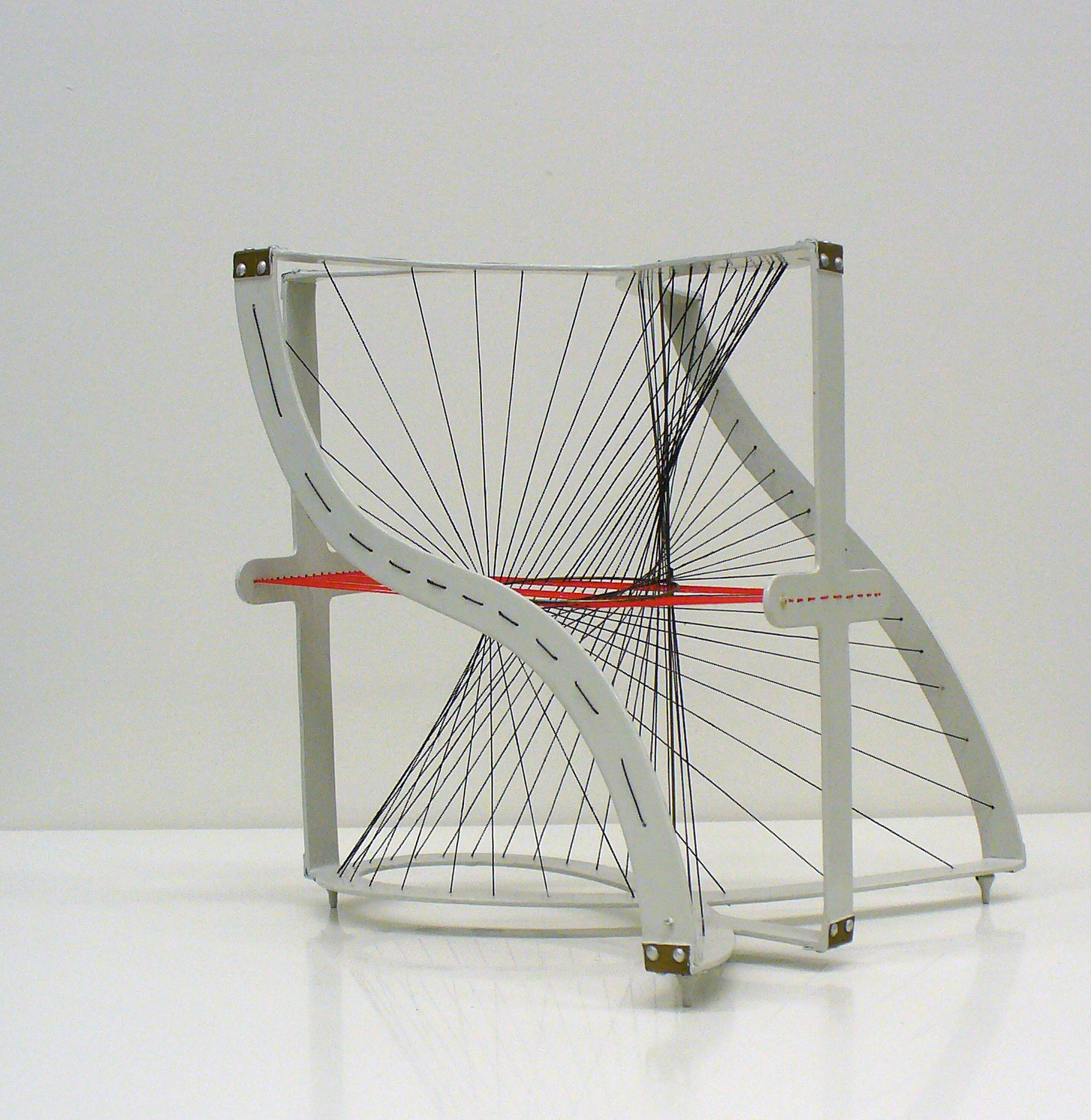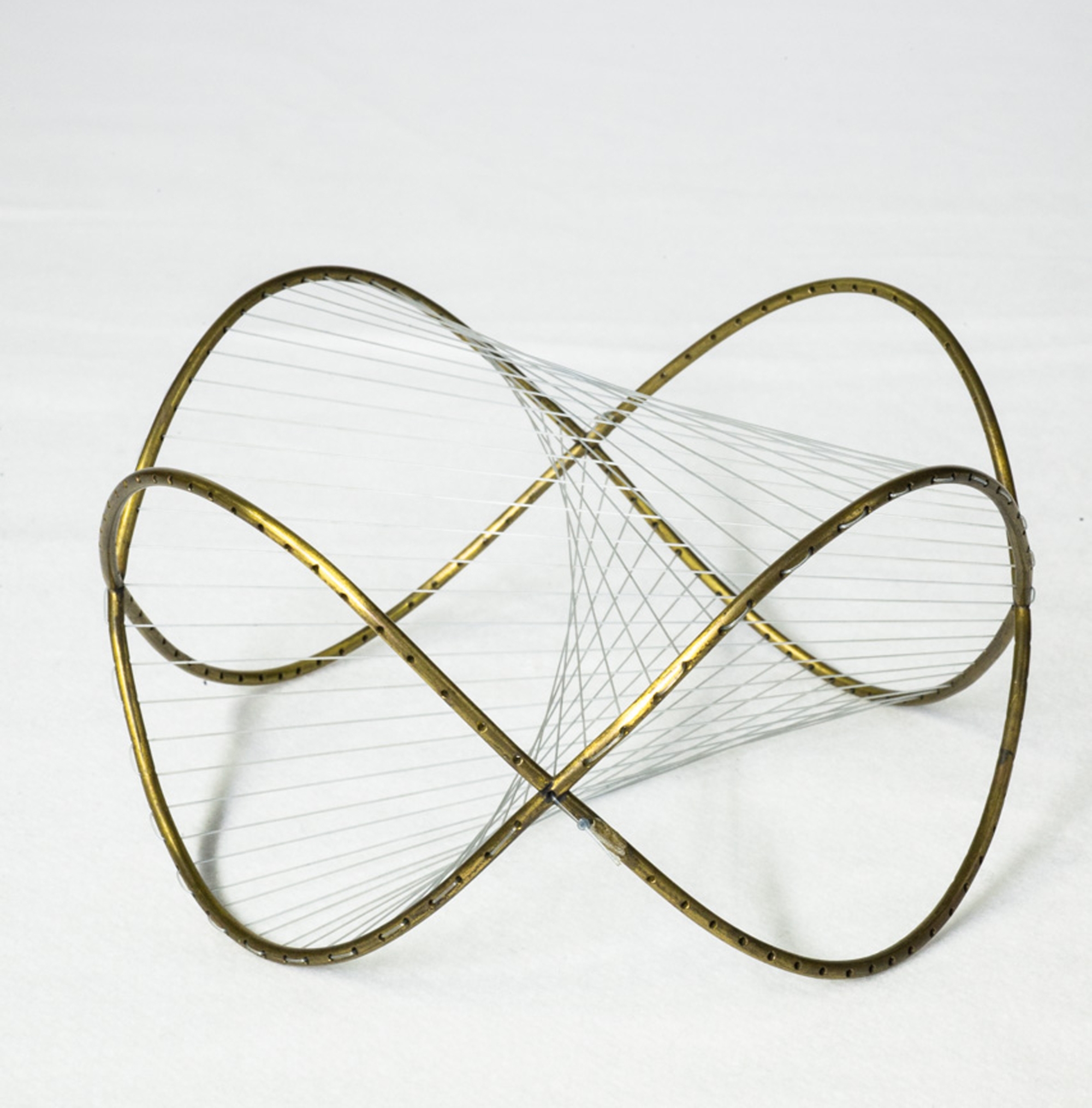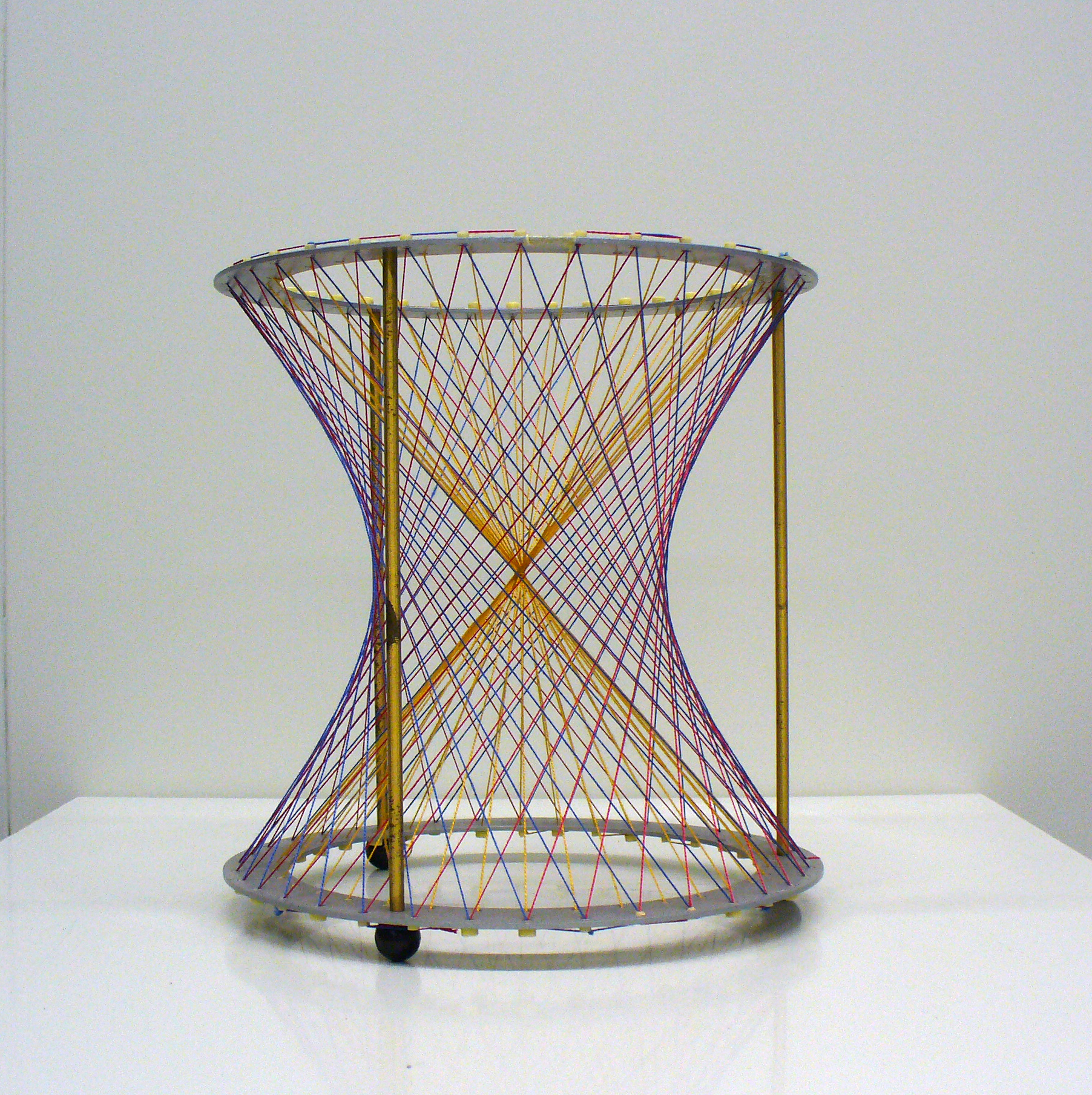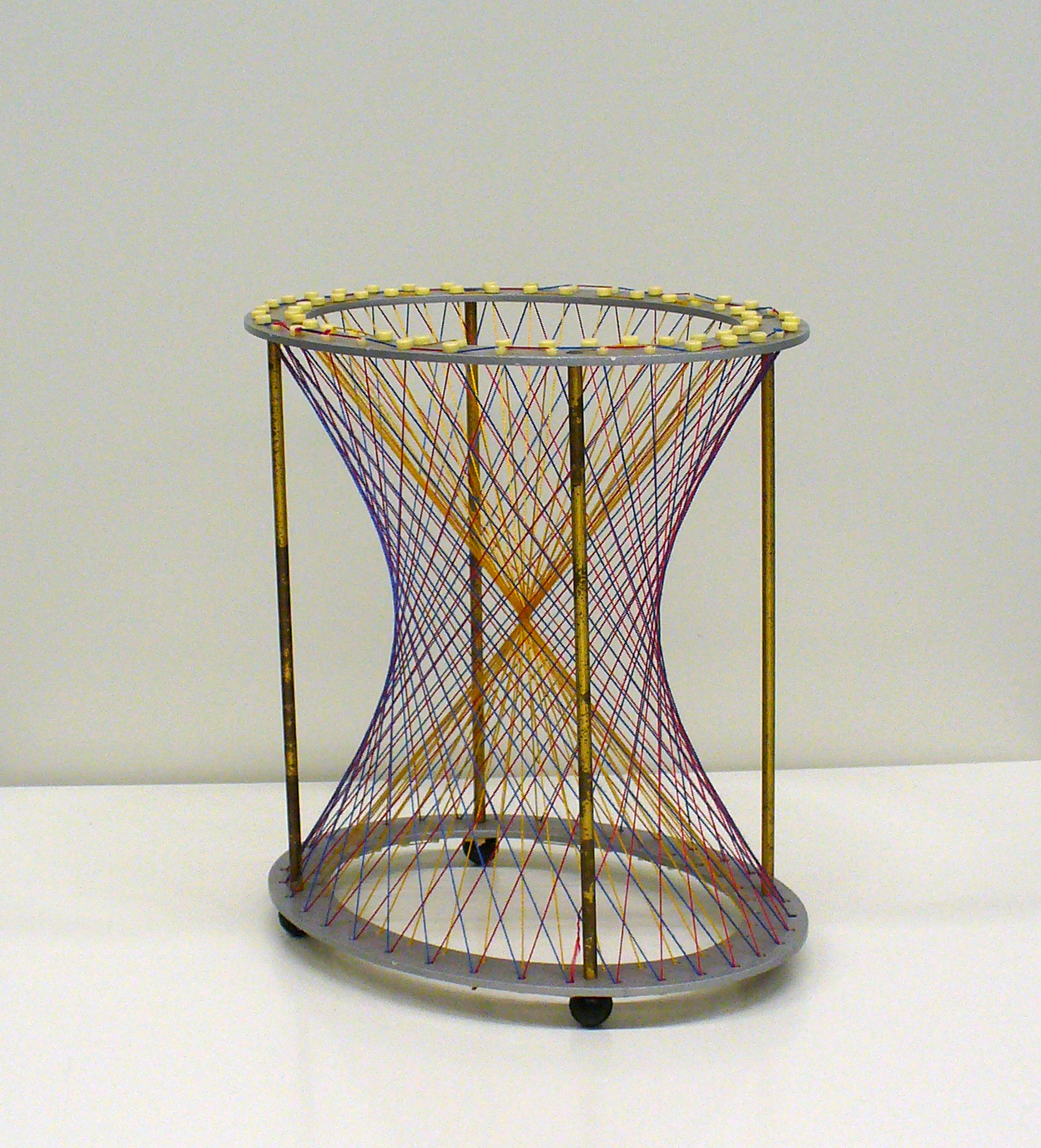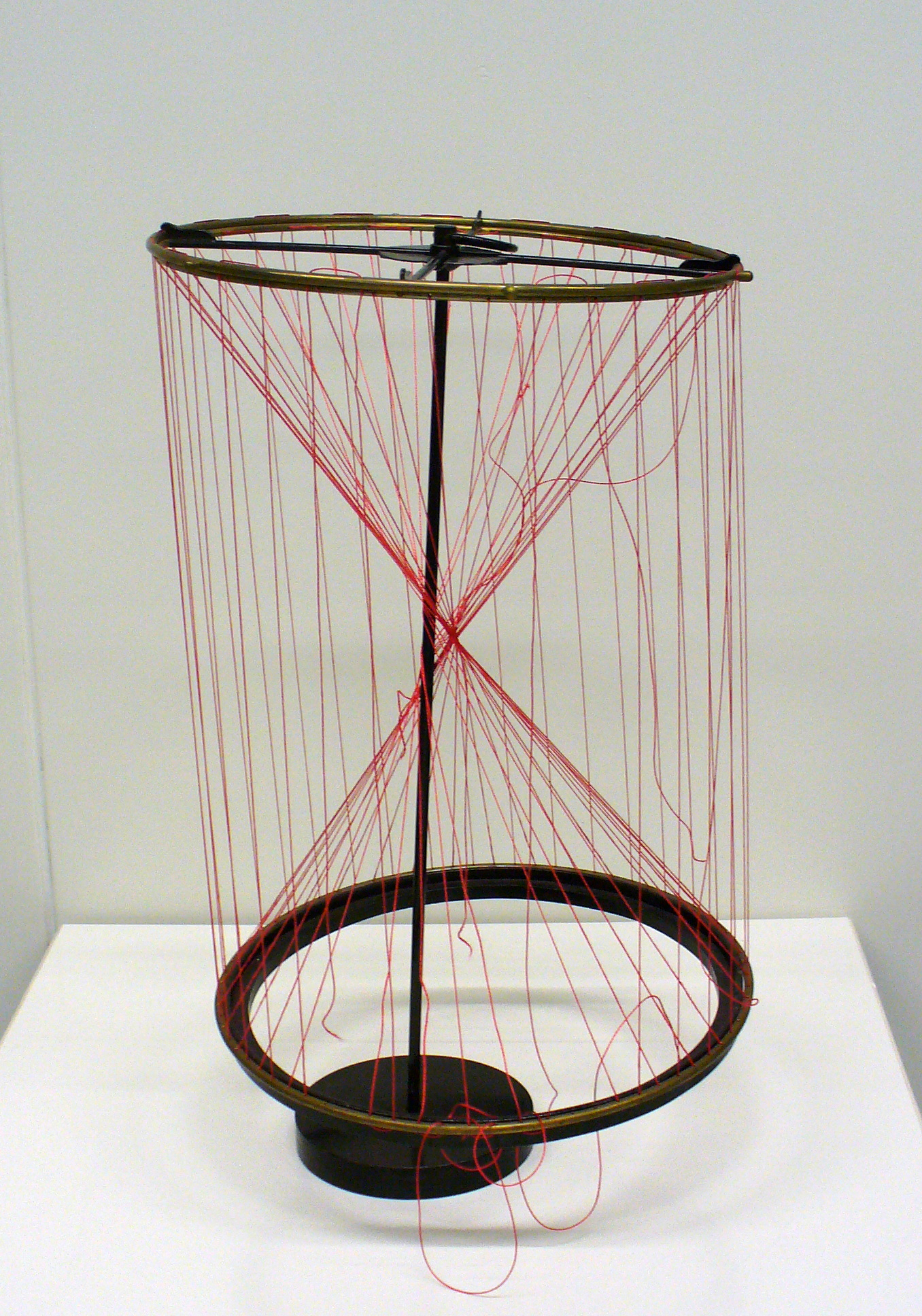|
Fm_1 Abwickelbare Regelschraubenfläche (1.Fall) 20 x 21 cm, Metall und Fäden Verlag Martin Schilling Modellnummer: 1a, 127 |
|
|
Fm_2 Verschlungene Regelschraubenfläche (2.Fall) 20 x 22 cm, Metall und Fäden Verlag Martin Schilling Modellnummer: 2, 129 |
|
|
Fm_23 Schiefe offene Strahlschraubfläche |
|
|
Fm_24 Schraubtorse 25 x 25 x 57 cm, Metall, Faden |
|
Erläuterungen zu Singularitäten von Raumkurven
|
Fm_4 Singularitäten von Raumkurven 25 x 25 x 25 cm, Stahl lackiert, Messing, Fäden Karl Kolb Frankfurt Mathematische Modelle, 1978 Nr. 16.26 - Model with non-uniform positional |
|
|
Fm_5 Singularitäten von Raumkurven 25 x 25 x 25 cm, Stahl lackiert, Messing, Fäden Karl Kolb Frankfurt Mathematische Modelle, 1978 Nr. 16.11 - Model with uniform positional relation-ships of the curve elements to infinity- Model without reverse elements |
|
|
Fm_6 Singularitäten von Raumkurven 25 x 25 x 25 cm, Stahl lackiert, Messing, Fäden Karl Kolb Frankfurt Mathematische Modelle, 1978 Nr. 16.16 Model with uniform positional relationships of the curve elements to infinity- Model having as reverse elements a proper point, a proper osculating plane as well as improper |
|
|
Fm_7 Singularitäten von Raumkurven 25 x 25 x 25 cm, Stahl lackiert, Messing, Fäden Karl Kolb Frankfurt Mathematische Modelle, 1978 Nr. 16.28 - Model with uniform positional |
|
|
Fm_8 Singularitäten von Raumkurven 25 x 25 x 25 cm, Stahl lackiert, Messing, Fäden Karl Kolb Frankfurt Mathematische Modelle, 1978 Nr. 16.17 - Model with uniform positional |
|
|
Fm_9 Singularitäten von Raumkurven 25 x 25 x 25 cm, Stahl lackiert, Messing, Fäden Karl Kolb Frankfurt Mathematische Modelle, 1978 Nr. 16.13 - Model with uniform positional |
|
|
Fm_10 Singularitäten von Raumkurven 25 x 25 x 25 cm, Stahl lackiert, Messing, Fäden Karl Kolb Frankfurt Mathematische Modelle, 1978 Nr. 16.27, Model with non-uniform positional |
|
|
Fm_11 Singularitäten von Raumkurven 25 x 25 x 25 cm, Stahl lackiert, Messing, Fäden Karl Kolb Frankfurt Mathematische Modelle, 1978 Nr. 16.25, Model with non-uniform positional |
|
|
Fm_12 Singularitäten von Raumkurven 25 x 25 x 25 cm, Stahl lackiert, Messing, Fäden Karl Kolb Frankfurt Mathematische Modelle, 1978 Nr. 16.24, Model with non-uniform positional |
|
|
Fm_13 Singularitäten von Raumkurven 25 x 25 x 25 cm, Stahl lackiert, Messing, Fäden Karl Kolb Frankfurt Mathematische Modelle, 1978 Nr. 16.14 - Model with uniform positional |
|
|
Fm_14 Singularitäten von Raumkurven 25 x 25 x 25 cm, Stahl lackiert, Messing, Fäden Karl Kolb Frankfurt Mathematische Modelle, 1978 Nr. Nr. 16.18, Model with non-uniform positional |
|
|
Fm_15 Singularitäten von Raumkurven 25 x 25 x 25 cm, Stahl lackiert, Messing, Fäden Karl Kolb Frankfurt Mathematische Modelle, 1978 Nr. 16.21 - Model with non-uniform positional |
|
|
Fm_16 Singularitäten von Raumkurven 25 x 25 x 25 cm, Stahl lackiert, Messing, Fäden Karl Kolb Frankfurt Mathematische Modelle, 1978 Nr. 16.23, Model with non-uniform positional |
|
|
Fm_17 Singularitäten von Raumkurven 25 x 25 x 25 cm, Stahl lackiert, Messing, Fäden Karl Kolb Frankfurt Mathematische Modelle, 1978 Nr. 16.15 - Model with uniform positional |
|
|
Fm_18 Singularitäten von Raumkurven 25 x 25 x 25 cm, Stahl lackiert, Messing, Fäden Karl Kolb Frankfurt Mathematische Modelle, 1978 Nr. 16.22 - Model with non-uniform positional relationships of the curve elements |
|
|
Fm_19 Singularitäten von Raumkurven 25 x 25 x 25 cm, Stahl lackiert, Messing, Fäden Karl Kolb Frankfurt Mathematische Modelle, 1978 Nr. 16.12 - Model with uniform positional |
|
|
Fm_3 Dodekaeder mit 5 einbeschriebenen Würfeln Kantenlänge 13 cm, Stahl lackiert, Fäden Karl Kolb Frankfurt |
|
|
Fm_29 Dodekaeder Kantenlänge 13 cm, Stahl lackiert, Fäden |
|
|
Fm_30 Ikosaeder Kantenlänge 20 cm, Stahl lackiert, Fäden |
|
|
Fm_31 Hexaeder Kantenlänge 25 cm, Stahl lackiert, Fäden |
|
Erläuterungen zu Strahlregelflächen 3. Grades
|
Fm_27 Regelflächen 3. Ordnung Die 2. Leitgerade schneidet die Ebene des Kreises in einem innerhalb desselben gelegenen Punkte. Die 1. Leitgerade ist ihrem ganzen Verlauf nach reelle Doppellinie der Fläche. Die Kanten und Cuspidalpunkte sind imaginär. Zitiert nach Schilling, M.: Catalog mathematischer Modelle für den höheren mathematischen Unterricht, 6. Auflage (1903), S. 88. 20 x 20 x 20 cm Metall, Faden |
|
|
Fm_25 Regelflächen 3. Ordnung 25 x 25 x 20 cm Metall, Faden |
|
|
Fm_26 Regelflächen 3. Ordnung 21 x 21 x 20 cm, Metall, Faden |
|
|
Fm_28 Die 2. Leitgerade fällt mit der 1. zusammen. Dieselbe ist in ihrem ganzen Verlauf reelle Doppellinie und zugleich Kante der Fläche. Die beiden Cuspidalpunkte fallen in einem Punkt zusammen, durch welchen Punkt noch die 2. Kante der Fläche geht. Zitiert nach Schilling, M.: Catalog mathematischer Modelle für den höheren mathematischen Unterricht,6. Auflage (1903), S. 88 21 x 21 x 20 cm Metall, Faden |
|
|
Fm_32 Zylindroid, vereint mit dem rechtwinkligen Paraboloid 8 x 15 cm, Metall, Faden |
|
|
Fm_20 Einschaliges Hyperboloid mit Asymptotenkegel 23 x 23 x 23 cm, Kunststoff, Faden zweifarbig |
|
|
Fm_21 Einschaliges elliptisches Hyperboloid mit Asymptotenkegel 23 x 20 x 23 cm, Kunststoff, Faden zweifarbig |
|
|
Fm_22 Drehhyperboloid |
|




